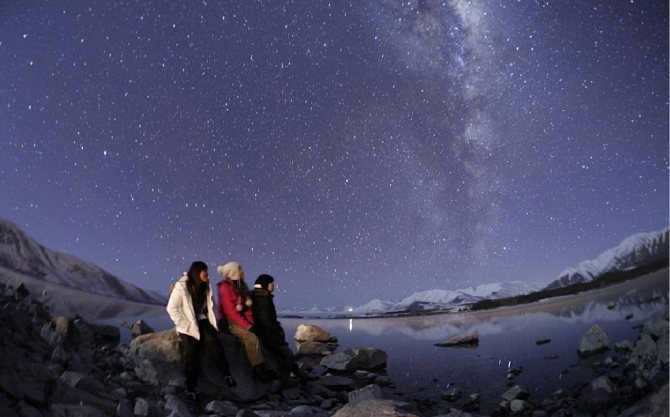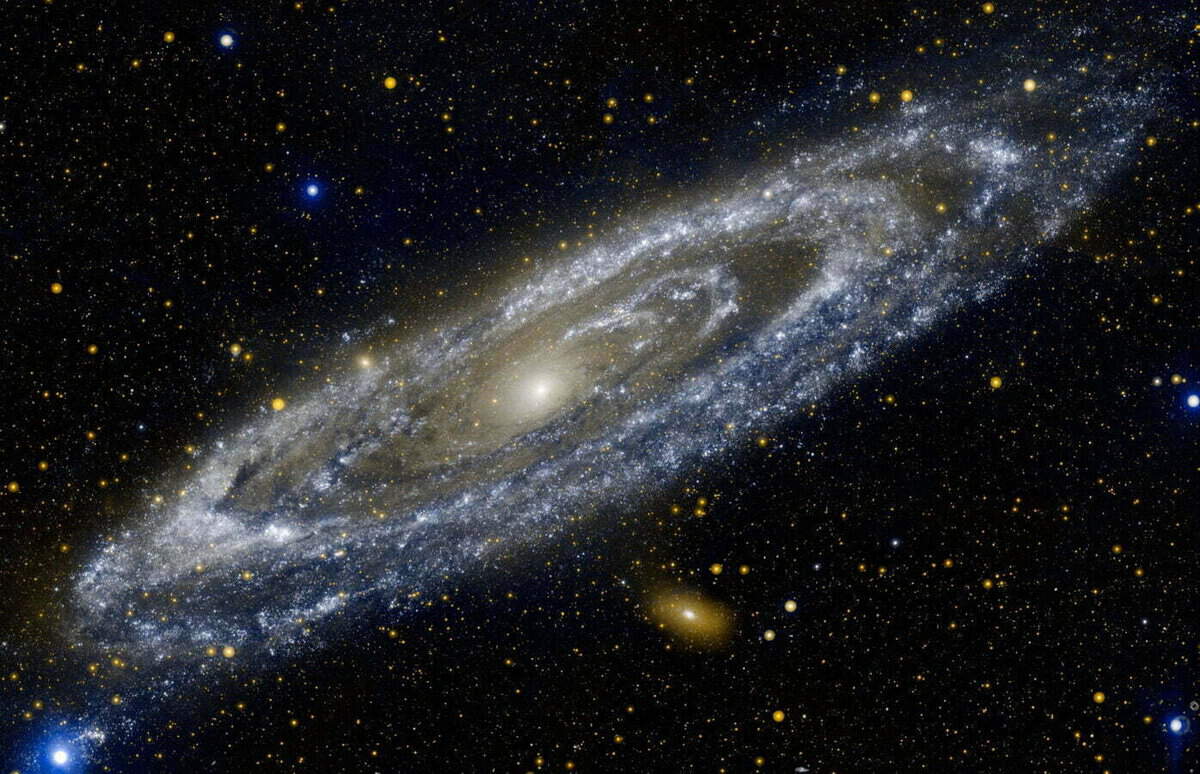The Andromeda Galaxy, also referred to as Messier 31 or the “Great Spiral Galaxy,” is among the most remote celestial objects that can be observed with the unassisted human eye. Utilize the surrounding constellations as reference points to pinpoint its location in the night sky. While the galaxy can be faintly perceived without any optical aid, the use of binoculars or a telescope will enhance its visibility. For optimal viewing, venture outdoors on a dark fall or winter night. Locating it for the first time may prove challenging, but once found, it becomes difficult to lose it again.
Steps
Exploring the Universe
1. Escape the glow of the city. The presence of any artificial light can hinder your search for the Andromeda Galaxy. It’s advisable to distance yourself from urban areas, streetlights, or illuminated parks. Ascend a mountain, venture into a secluded field, or locate a spot devoid of light pollution.
2. Allow your eyes to adjust to the absence of light. The Andromeda Galaxy doesn’t emit as much light as the other stars in its vicinity. When you venture out to observe the stars, allocate fifteen minutes for your eyes to adapt to the darkness. You may be surprised to discover that you can discern more stars than you initially thought.
4. Install a stargazing application. Numerous applications are available that can assist you in locating the Andromeda Galaxy and other stars. These apps will adjust their star charts based on your geographical position, hemisphere, time of year, and time of night. Examples of such apps include Star Chart, NightSky, and GoSkyWatch.
5. Spot the Cassiopeia constellation. If you manage to locate the Big Dipper, look for a bright star in its vicinity. This star is known as Polaris or the North Star. Across from the Big Dipper, you will find the constellation Cassiopeia. Cassiopeia is characterized by five stars forming a “W” shape. The right side of this “W” will lead you directly to the Andromeda Galaxy.
6. Identify the Pegasus and Andromeda constellations. Pegasus appears as a large rectangle in the sky. From the upper left corner of this rectangle, you should be able to see two lines of stars. This forms the constellation Andromeda.
7. Search for a location amidst the constellations Pegasus and Cassiopeia. The Andromeda Galaxy can be found between the Pegasus and Cassiopeia constellations. It will appear as a blur or hazy oval in the night sky.
8. Trace a path connecting the stars Mirach and Mu of Andromeda. Begin at the star in the upper left corner of Pegasus. This is where the Andromeda constellation starts. Follow the constellation downward two stars. You will come across two stars positioned one above the other, known as Mirach and Mu Andromeda. If you draw a line through these two stars and continue past Mu Andromeda, you will eventually arrive at the Andromeda Galaxy.
Choosing an Instrument
1. Begin by observing the galaxy with your naked eye. The Andromeda Galaxy can be seen without any special equipment. It will appear as a faint, blurry oval in the night sky. Once you have located the general area where the galaxy is situated, it may be easier to locate it using binoculars or a telescope.
3. Utilize a telescope for a more in-depth examination. A typical 8-inch (20 cm) reflector telescope will enable you to view the galaxy’s nucleus, as well as its two companion galaxies. The galaxy is so large that you may not be able to observe its entirety through your telescope.
If you opt to use a telescope, set it to the lowest magnification possible. While the Andromeda Galaxy may appear relatively small to the naked eye, it will appear significantly larger when viewed through a telescope.
2. Opt for a night without a moon. The presence of the moon can also obstruct the visibility of the stars. To get the best view of the Andromeda Galaxy, try going out on a night when there is a new moon or a crescent moon.
If the moon is full, it might be challenging to locate the Andromeda Galaxy. A new moon occurs once a month. Consult the online calendar to determine the most suitable night for stargazing during that month.
The Andromeda Nebula is our neighboring galaxy. In 946, the Persian astronomer As-Sufi included a description of a small cloud in his Catalog of Fixed Stars. This was the first recorded sighting of the Andromeda Nebula, and it has since become the most popular object in deep space. Astronomers have been observing this galaxy for centuries, constantly refining their understanding of its characteristics. Eventually designated as M31, the Andromeda Nebula was discovered to be a spiral galaxy.
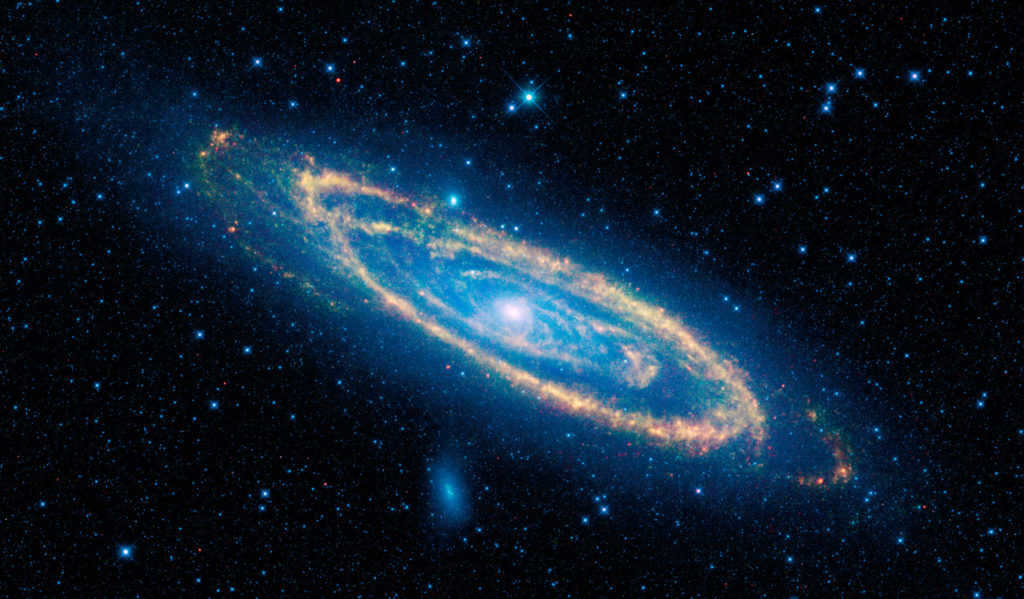
Position
The Andromeda Galaxy, also known as M31, is situated in the Local Group of galaxies. It is the largest member of this group, housing approximately one trillion stars and possessing a total mass equivalent to one and a half times that of our own Milky Way galaxy. Spanning over a distance of 260,000 light-years, the Andromeda Nebula is accompanied by various galactic satellites. Due to its inclination towards us at an angle of 15 degrees, it offers convenient opportunities for observation. With an apparent angular size measuring 191 minutes and an apparent brightness of +4.3m, the Andromeda Nebula stands out as one of the more prominent galaxies.
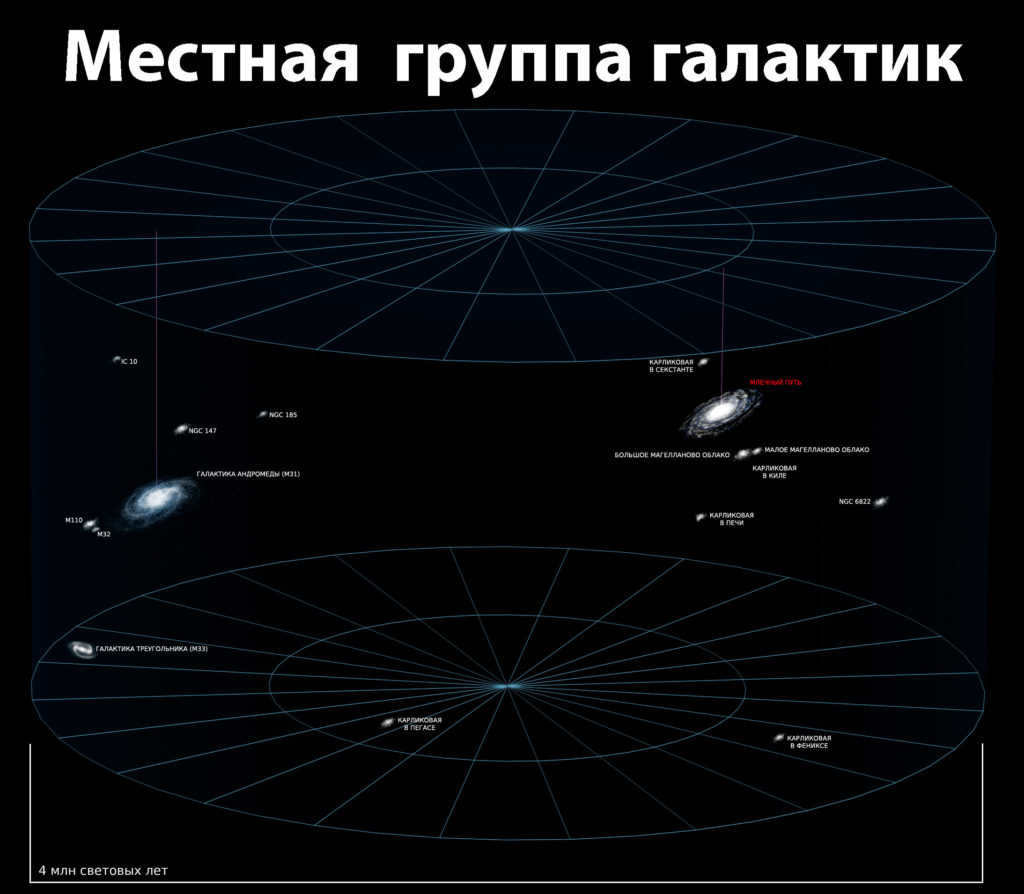
This immense star formation is currently heading towards our solar system at a velocity of 300 kilometers per second. It will take approximately four billion years for the Milky Way and Andromeda to collide, however, there is no expectation of a universal catastrophe. It is most probable that both galaxies will initially engage in a slow and graceful dance before ultimately merging into a single entity. It is possible that our solar system may be expelled into the vastness of intergalactic space, but it is highly optimistic that our solar system will remain unaffected.
Andromeda is home to the first exoplanet discovered outside our solar system. This exoplanet, known as PA-99-N2, orbits around a star in Andromeda.
The center of the galaxy
Similar to most galaxies, the galaxy M31 has a supermassive black hole at its core. This black hole has a mass that is 140 million times greater than that of the Sun. Surrounding the black hole is a unique disk of young blue stars. These stars rotate around the core, much like the planets in our solar system orbit the Sun.
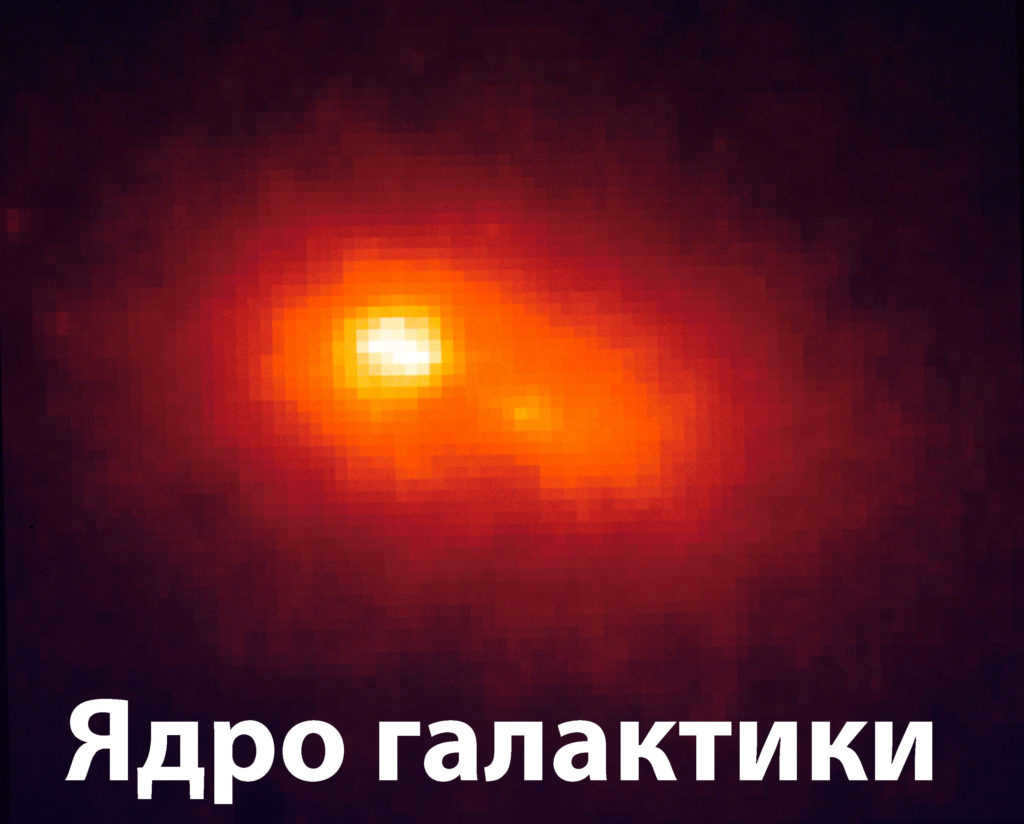
It’s a puzzle how this bagel-shaped disk managed to organize itself in such close proximity to the supermassive entity. According to all indications, the gravitational forces of the black hole should not have allowed the formation of stars from gas and dust clouds. The disk harbors over 400 stars that came into being approximately 200 million years ago. The diameter of this intriguing entity amounts to a mere light-year, and the rotational velocities of the participants in this peculiar waltz reach 1000 km/sec.
In Andromeda, scientists have found almost 460 globular star clusters, with the most prominent one being named Mayall II (G1). This particular cluster stands out not only within the galaxy, but also among all other objects in the Local Group due to its unmatched luminosity. Situated 130 thousand light years away from the galactic center, it contains an impressive concentration of 300 thousand stars. It is believed that these clusters may be remnants of a dwarf galaxy that was assimilated by M31 in the past. Additionally, the cluster harbors a black hole at its core, albeit a relatively modest one with a mass of 20 thousand solar masses.
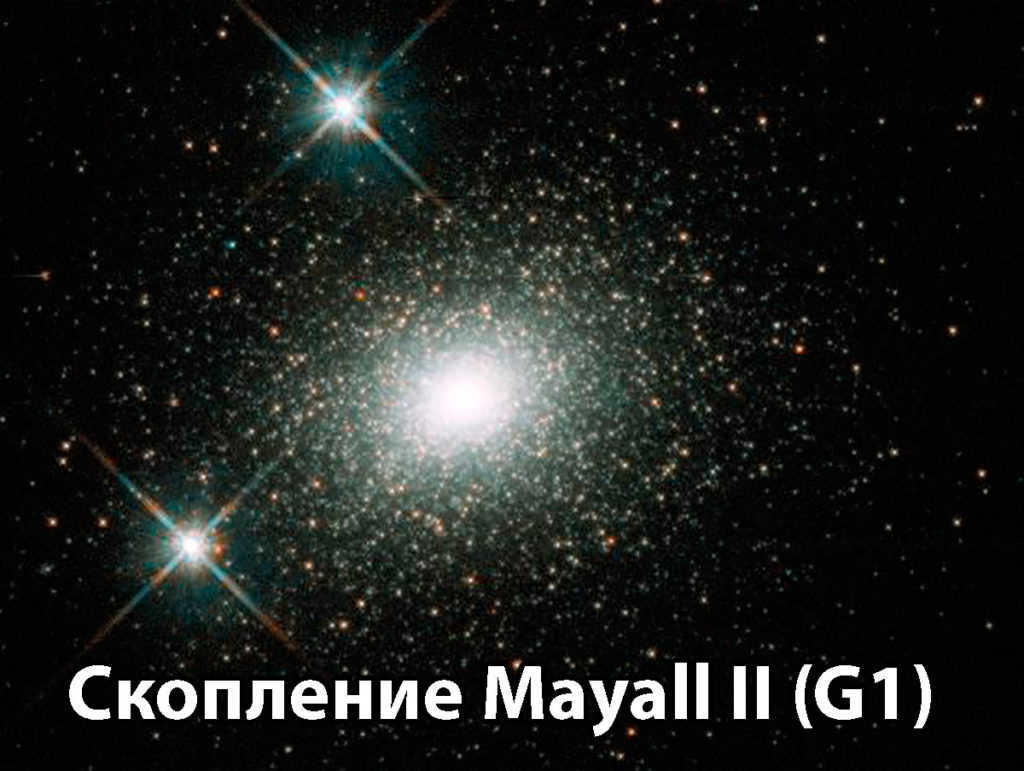
In addition, the Andromeda Nebula is home to three unique star clusters. While they contain a typical number of stars for these types of formations, their size is extraordinary, spanning hundreds of light years. These clusters also have less mass, leading scientists to speculate that they may represent a transitional stage between globular clusters and dwarf spheroids.
Satellites of Andromeda Galaxy
A massive galaxy has multiple satellites in its orbit. These satellites are small galaxies with a population of only a few billion stars each. Two notable satellites, M32 and M110, can be easily observed in photographs of the Andromeda Galaxy.
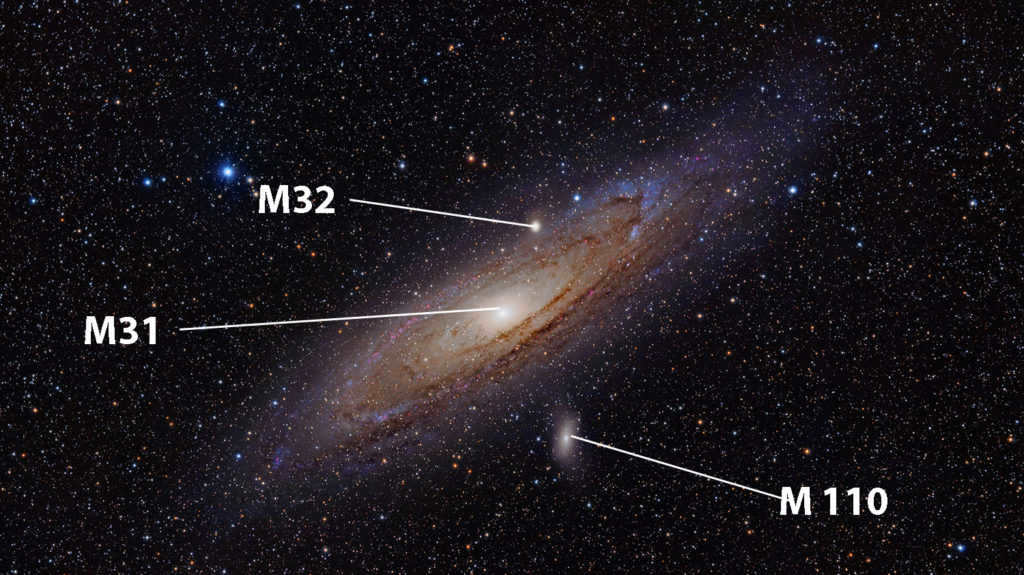
M32 was probably a spiral galaxy in the past, but its strong neighbor has prevented the development of spiral arms due to its gravitational forces. The same gravitational forces promote the interaction of stars with M110. The CFHT telescope, located in Hawaii, has successfully identified several galaxies. These galaxies are all small and orbit the Andromeda galaxy in the same plane.
It is possible to observe the galaxy even without the use of instruments during the autumn and winter seasons. This celestial body, known as the Andromeda Nebula, is the farthest object that can be seen with the naked eye. Although it appears as a small blurry spot in the sky, it is actually quite distant in the vast expanse of the Universe. However, by utilizing a pair of high-quality binoculars, your vision can be enhanced and the speck will transform into a small elliptical cloud. If you have access to a small telescope, you will not only be able to see the Andromeda galaxy more clearly, but also its two brightest satellites.
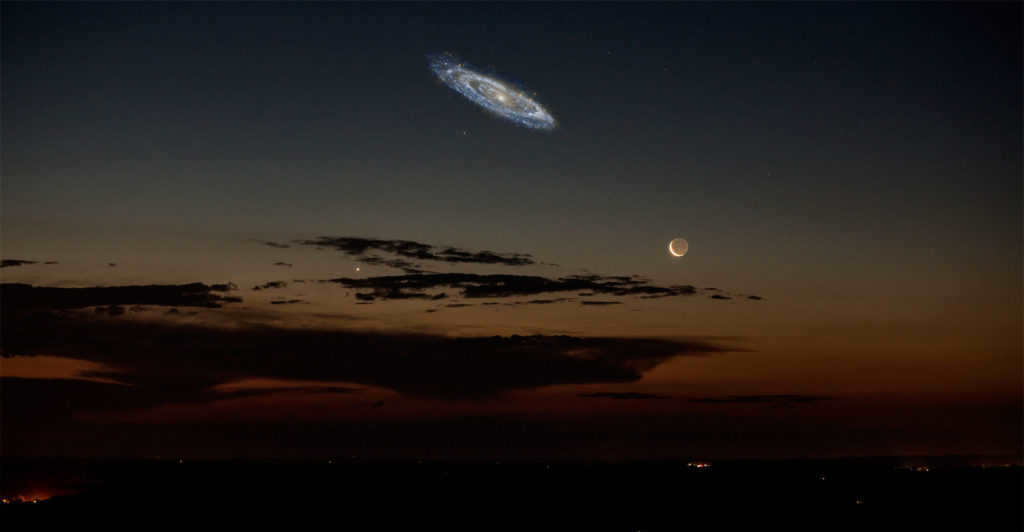
If our eyesight was more acute, the Andromeda Nebula would appear different due to its large angular size. In photographs, the object appears seven times larger than the moon. Furthermore, if a microphotometer was used, the nebula would appear ten times larger and would cover an area equivalent to one-third of the Big Dipper’s bucket!
To locate the nebula in the night sky, start by locating the North Star, also known as Polaris. After that, in the constellation Cassiopeia, locate its brightest star, known as Shedar. By drawing an imaginary line between these two stars and extending it away from Polaris, you will be led to a formation called the Great Square. The Great Square consists of three stars from the constellation Pegasus and one star from the constellation Andromeda, specifically Alferanz. Alferanz is situated at the “head” of Andromeda, from which the “legs” extend. Just above the third leg star, which is closest to Cassiopeia, you will discover a hazy area in the sky.
Black holes
The center of the galaxy is filled with an abundance of black holes. This assertion was made possible through the observations made by the X-ray observatory “Chandra” and the orbital telescope XMM-Newton. Currently, there are 35 black holes known in this region, which is significantly more than in our own Milky Way galaxy. However, scientists speculate that there are actually many more black holes present, but they are currently invisible to us. The detection of these objects has allowed scientists to measure the amount of highly energized radiation that is emitted through their interactions with nearby stars.
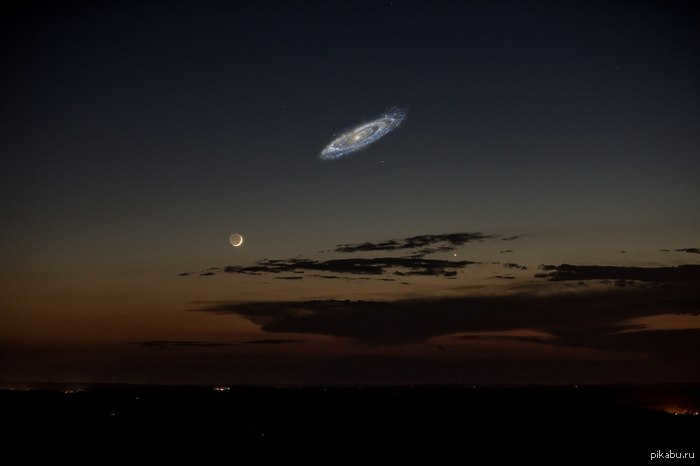
“The Andromeda Nebula is a rare extragalactic sight that can be observed without the aid of a telescope. In comparison to the Moon’s disk on the celestial sphere, it appears seven times larger to an Earth observer. However, only the galactic nucleus is easily discernible to the naked eye. To appreciate the intricate details of its structure, binoculars are required.”
The Great Spiral Galaxy in Andromeda (M31) is situated just 2.5 million light-years away, making it the nearest spiral galaxy to the Milky Way. The Andromeda Nebula is visible to the naked eye as a small, blurry spot, but due to its relatively dim appearance, it is challenging to determine the galaxy’s size in the Earth’s sky. The composite image below provides a means of comparing the angular size of our closest galaxy with a more recognizable celestial object of greater brightness. The Andromeda photograph, captured using a lengthy exposure, showcases stunning clusters of blue stars in the spiral arms encircling the golden core. The nebula image is combined with a photograph of the almost full Moon taken at the same angular scale. The Moon’s angular size in the sky measures 0.5°, whereas Andromeda’s angular size is several times larger. Additionally, the Andromeda image features two prominent satellite galaxies, M32 and M110, located at the bottom.
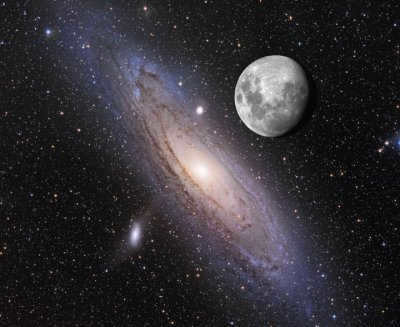
Image and translation in English
http://apod.nasa.gov/apod/ap061228.html
The process of detecting a galaxy involves several steps. First, locate Polaris, which is the alpha star of the Little Bear and the last star of the handle of the “Little Dipper”. Next, find Cassiopeia and identify the brightest star, alpha Cassiopeia, which is the second lower corner if Cassiopeia appears as a W. Once these two stars are identified, mentally draw a line connecting them. The galaxy M 31 will be located on this line, appearing as a blurred ellipse beyond Cassiopeia.
Trying to locate Tayaty village on the map of Russia at a scale of 1:5000 can be quite challenging. However, with the help of an astronomical map and information about the constellations to look for, the process can be expedited. It is advisable to find a high vantage point, preferably in the mountains, that offers a clear view of the night sky. By combining these resources, one can navigate the map and successfully pinpoint the location of Tayaty village.
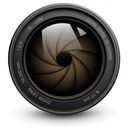
A touch of the Milky Way
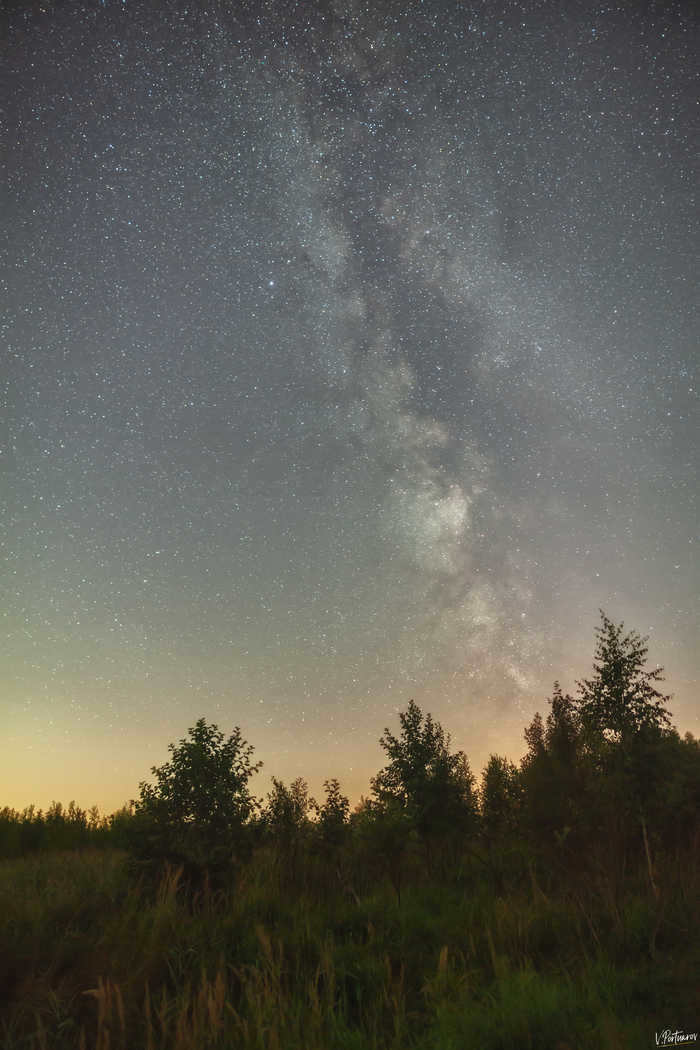
The Ilmen Lake boasts a breathtaking night sky filled with stars
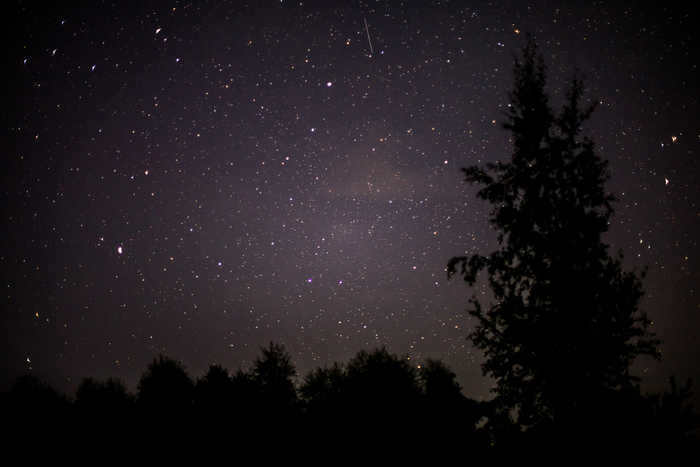
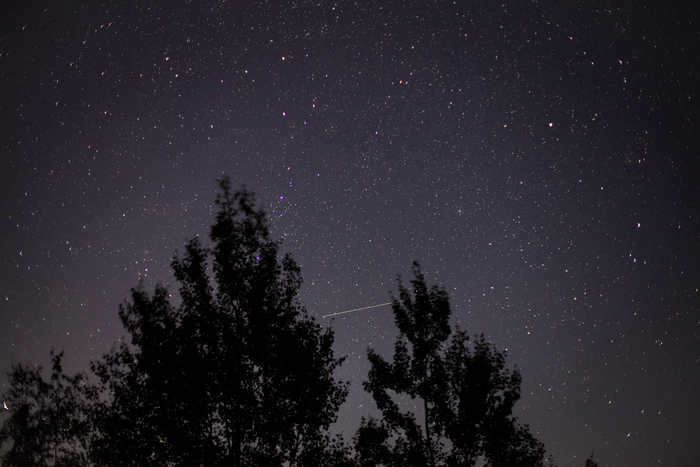
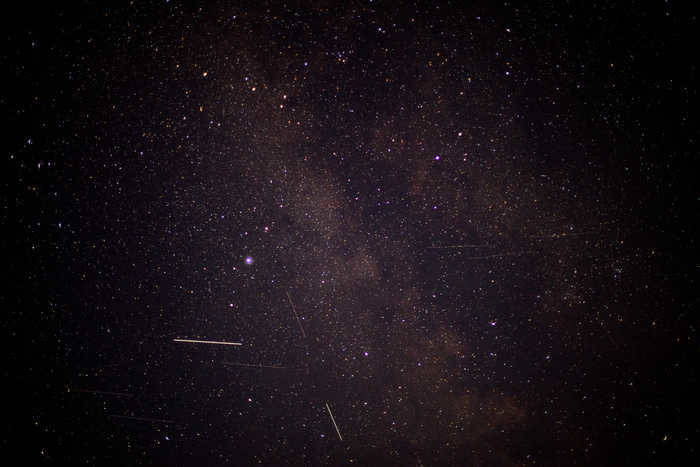
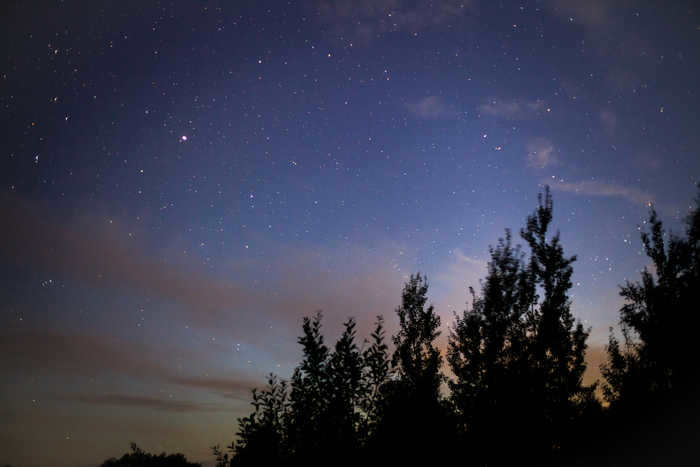
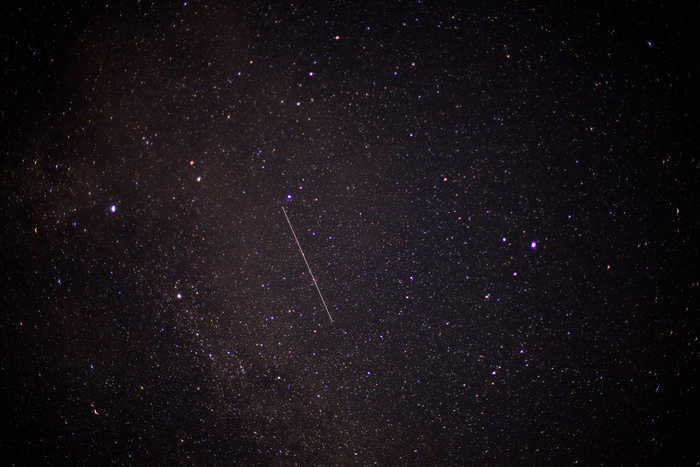

Quietness of the Night
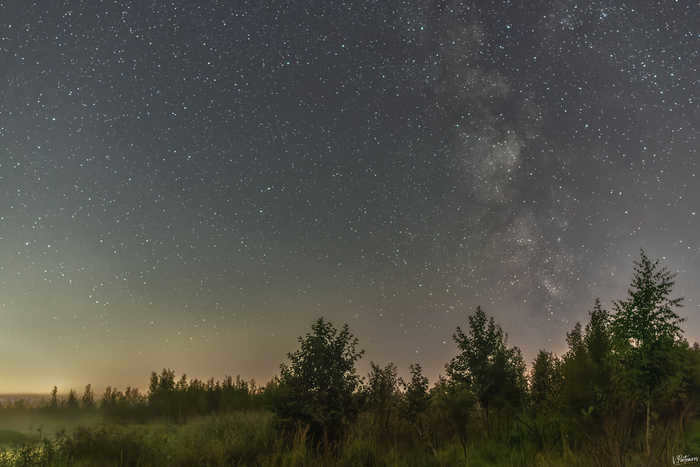
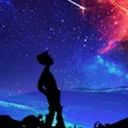
Cassiopeia
The Cassiopeia constellation is located 80 km away from Minsk and was captured using a Nikon d80 camera with a Nikkor 50mm 1.8 lens.
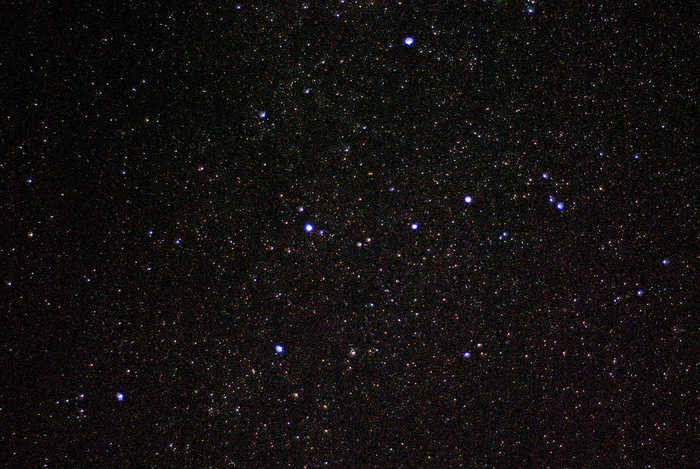
Andromeda Galaxy
I made my initial attempt to capture the Andromeda Galaxy through a telescope, but unfortunately, it didn’t go as planned. During a 30-second exposure, a dark cloud obstructed the view, causing me to become frustrated. Instead, I decided to use a tripod and a 50mm lens, which yielded much better results. If anyone has experience with astrophotography through a telescope, I would greatly appreciate some advice on the correct approach. It’s worth mentioning that the telescope I am using is a budget-friendly Celestron 70lt az.
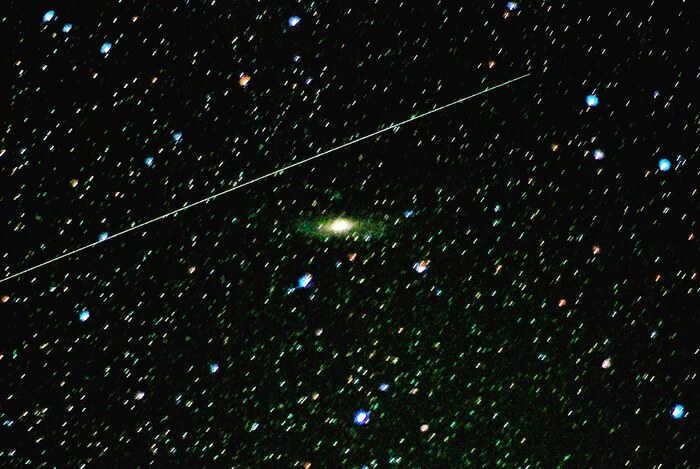
The bay in Cape Cod, Massachusetts is illuminated by the rising of the Milky Way.

Summer evening

The Moon in its Waning Phase on August 5, 2023 at 01:14, with an illumination of 85.6%
Photographed using a Canon 7d and SW707 telescope, capturing 50 frames.
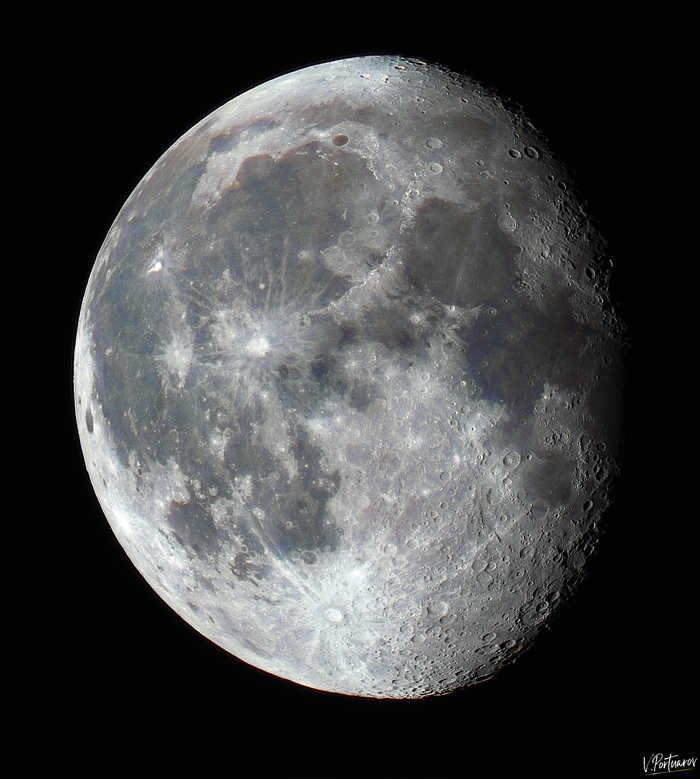

Just prior to sunrise.
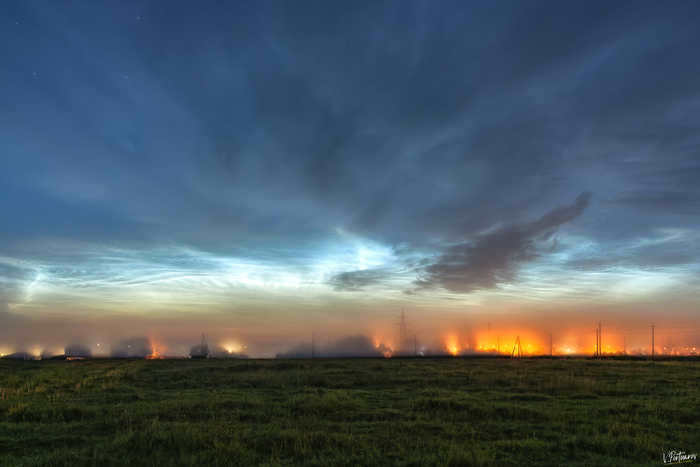
Only a decreasing moon
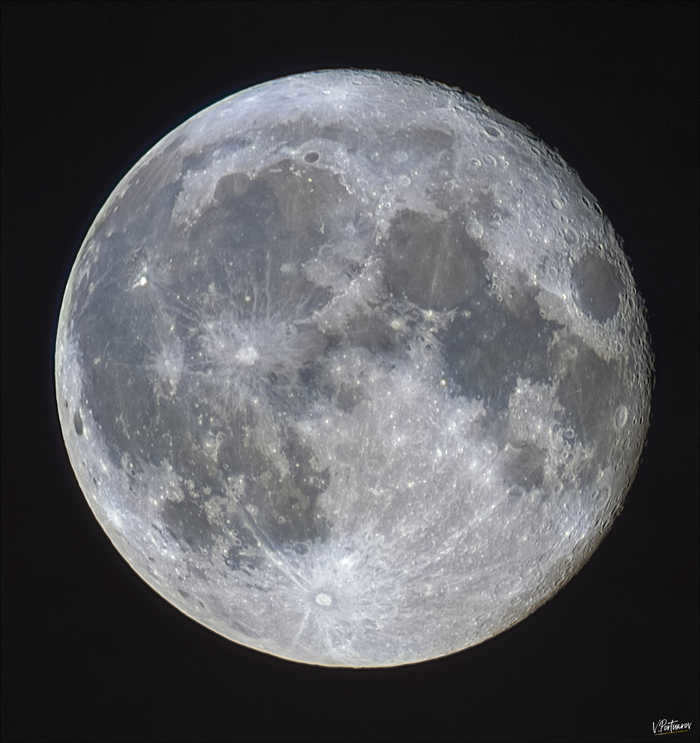
Tonight’s moon is absolutely stunning


The sky resembled an ocean with its silver clouds. Captured on August 1st in Chuvashia.
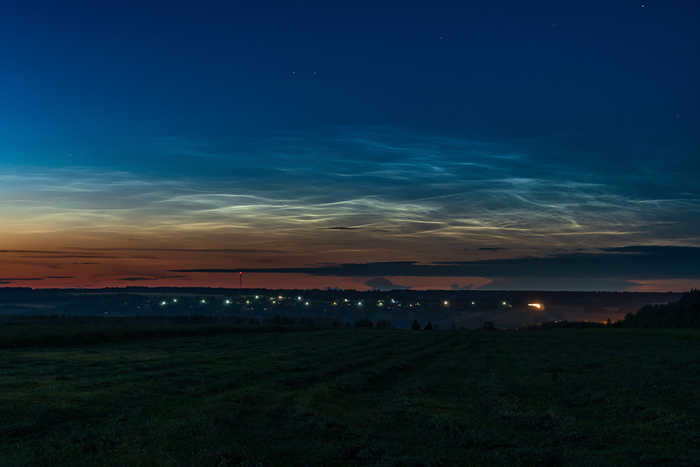
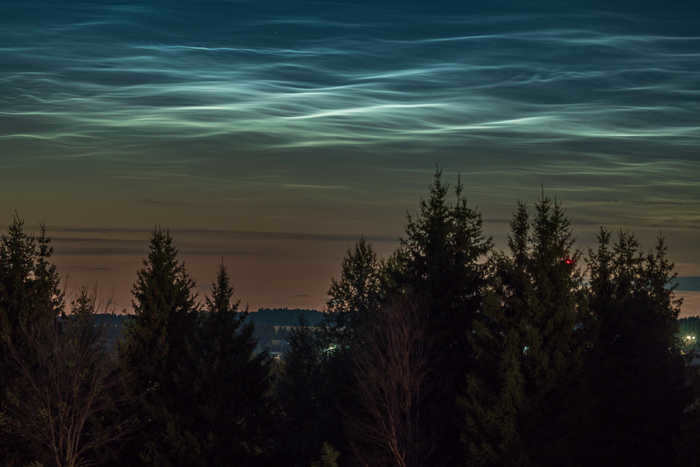
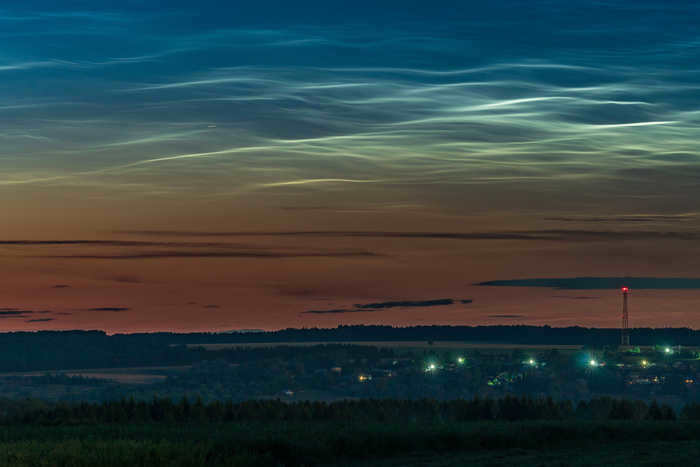
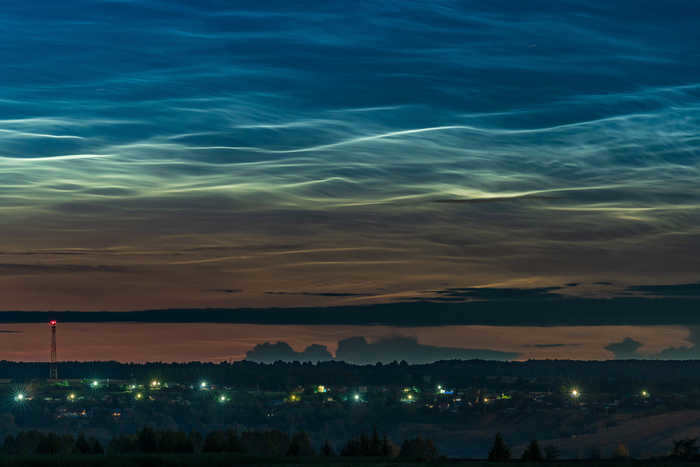
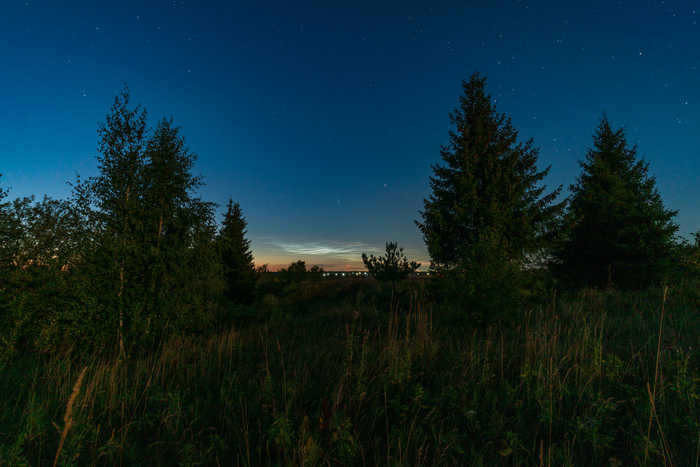
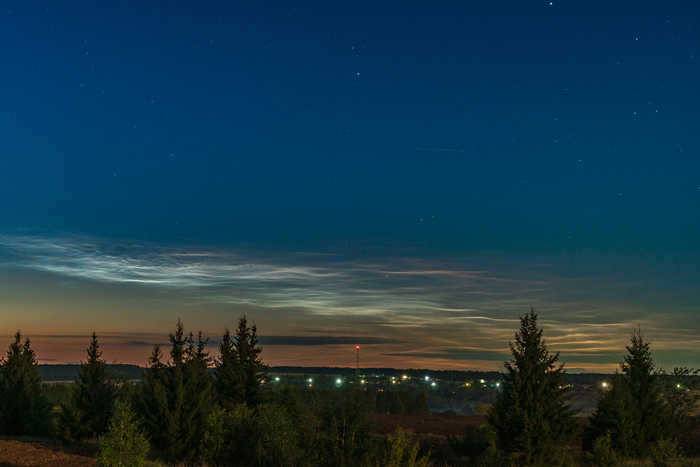

Silver clouds at the break of day
Located in Soltsy, Novgorod region.
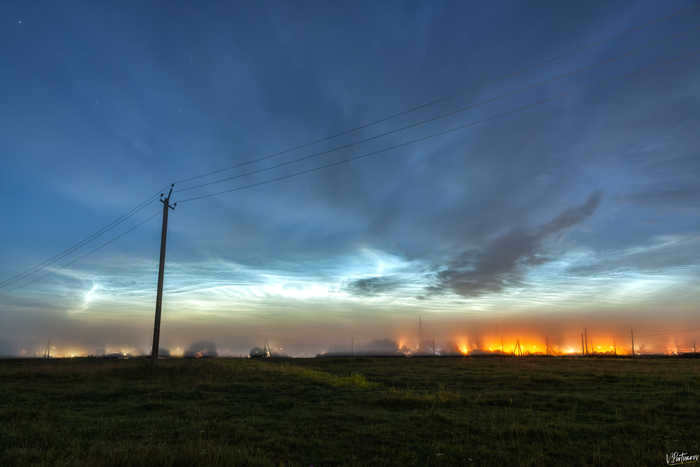
Amazing spectacle!
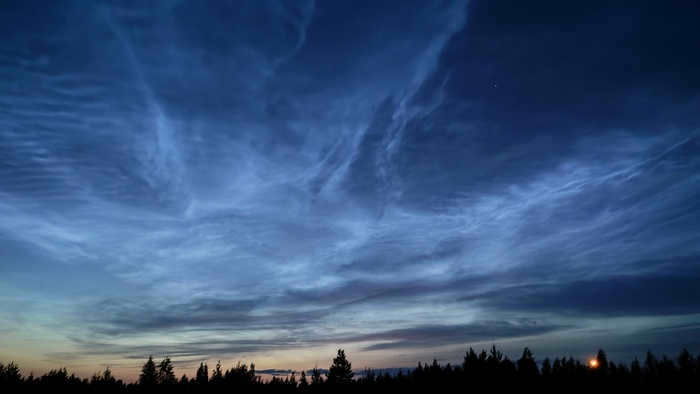
Hello! I would like to share a stunning photo captured on a classic film camera smartphone, so please appreciate it rather than criticize. ;)))

As the sun begins to rise.
Glistening clouds to the left, the majestic planet Jupiter to the right. Adjacent to the town of Soltsy, renowned for its military bravery, in the Novgorod region.
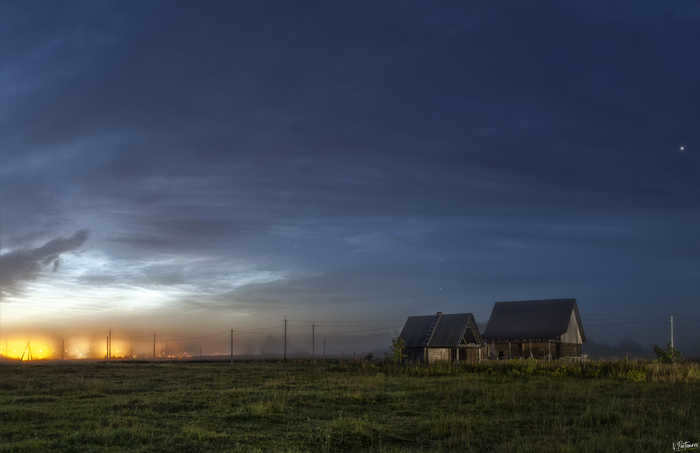
The closest neighbor to us
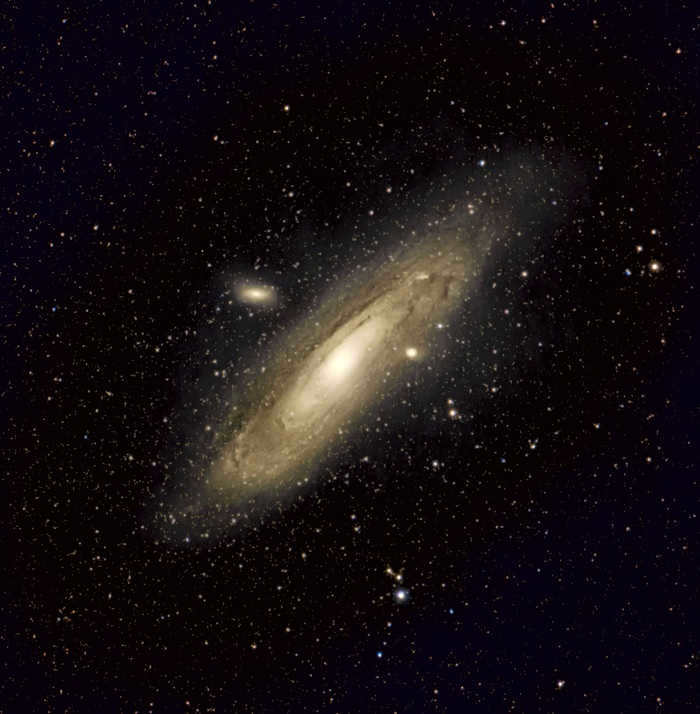
Photography equipment consisting of a camera and a 200 mm lens.

Calling the Milky Way. Part 2
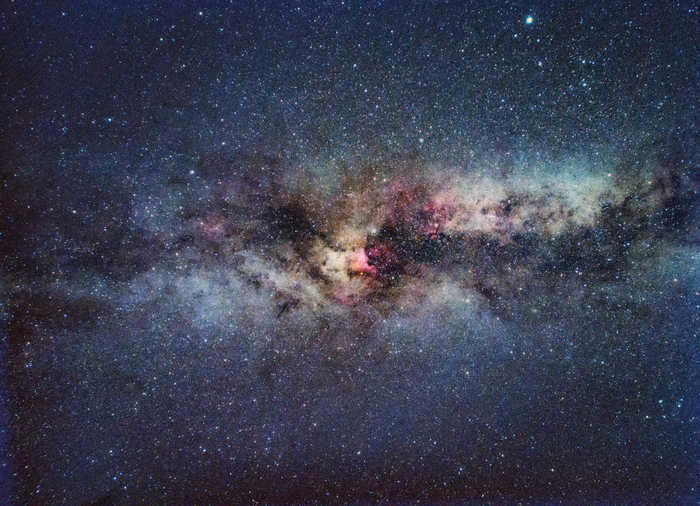
– Phone tripod adapter
Image editing: Sequator, StarNet, Photoshop.
The Great Attractor. What lies at the center of our galaxy’s rotation?
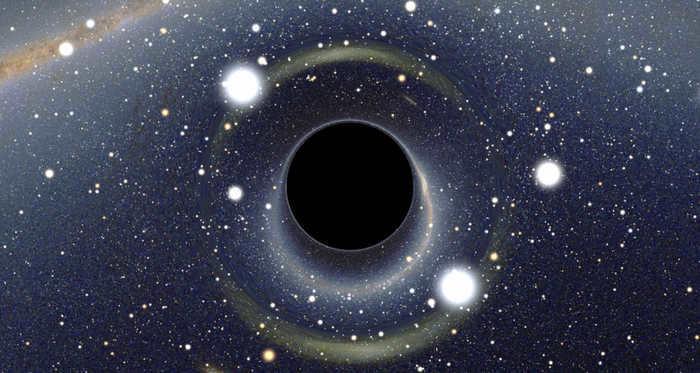
The Sun revolves around the core of the Milky Way galaxy, while the Earth revolves around the Sun. Have you ever wondered what the Milky Way and other galaxies revolve around?
Well, there is an intriguing object known as the Great Attractor, derived from the English word “attract”. It is a gravitational anomaly that captures our attention. Let’s explore what the scientific community has uncovered about the Great Attractor.
But before we delve into that, let’s refresh our understanding of gravity.
Gravity is the fundamental force that attracts objects with mass towards each other. The closer and more massive the objects, the stronger the gravitational pull.
However, in everyday life and even in scientific calculations, this concept is often simplified. That’s why we commonly say that the Earth attracts us, even though our own mass also influences the Earth.
Technically speaking, the Sun is not the center of the solar system, as the Earth and other planets do not actually orbit around it. Instead, there exists a common center of mass in the solar system, which acts as the focal point for the revolution of the Sun and all the planets.
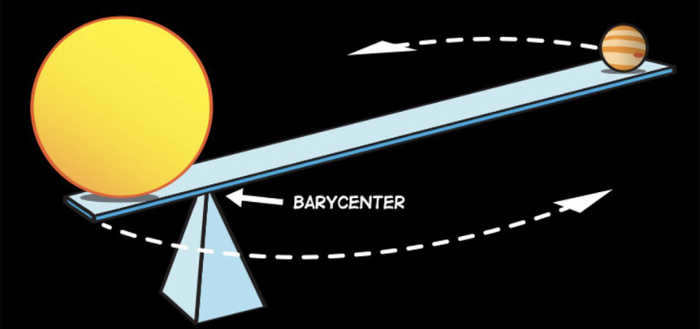
However, when it comes to calculations, the mass of the Sun, which accounts for 99.86% of the mass of the Solar System, is often overlooked. The center of mass of the solar system is actually located inside the Sun, although not exactly at its center.
This principle is also true in the vast expanse of the Universe. In reality, all the stars within our Milky Way galaxy orbit a central point of mass. However, this point is situated within the core of the galaxy, where the greatest concentration of mass can be found.
The Great Attractor possesses a mass that is thousands of times larger than that of our galaxy. Moreover, it serves as the focal point of gravity for not only the Milky Way, but also the neighboring galaxies.
Astrophysicists hold the belief that this entity represents a supercluster comprising various galaxies.
The great attractor isn’t as remarkable as it seems
During my youth, I used to be quite formidable. I was considered tough even by superheavyweight standards. Whenever I engaged in boxing matches, I heavily relied on my size, often neglecting my technique. My trainer would always remind me:
– “For every strength, there’s always a greater strength!
And my coach was absolutely correct. Whenever I attempted to conquer new heights, I encountered numerous individuals who were stronger and taller. Consequently, I had to adapt and be versatile, altering my tactics in order to achieve success through technique.
The initial estimates of the Great Attractor’s mass turned out to be overestimated as new research revealed a more powerful magnetic anomaly known as the Shepley supercollapse. This newly discovered anomaly is believed to have a mass four times greater than the Great Attractor, but it is located much farther away – about 650 million light years.
Currently, the Shepley supercollapse holds the title of being the largest point of attraction in the observable part of the Universe. Interestingly, it also has a gravitational pull on the Great Attractor, creating a mutual attraction between the two phenomena.
Scientists at the University of Hawaii have conducted calculations and found that the Great Attractor contributes approximately 44% to the motion of our galaxy. However, it is the Shepley supercollapse that exerts the greatest influence on our galaxy’s movement.
There are various gravitational anomalies present in the Universe, and one such example is the Volopassus Void. This colossal void showcases a significantly lower density of matter compared to the average density in the Universe. While this volume should contain 2,000 galaxies, only 60 have been discovered, indicating a matter density that is 33 times lower.
What does this mean for our galaxy in terms of these supercollisions?
Due to the presence of the Great Attractor and the Shepley supergroup, our Milky Way and the neighboring galaxies are moving at incredibly high speeds.
For instance, our Milky Way is currently hurtling directly towards the Andromeda galaxy, which happens to be three times larger than our own galaxy.
This is an approximation of what the night sky might appear like from Earth in approximately 2 billion years. The luminous Andromeda galaxy will dominate the view.
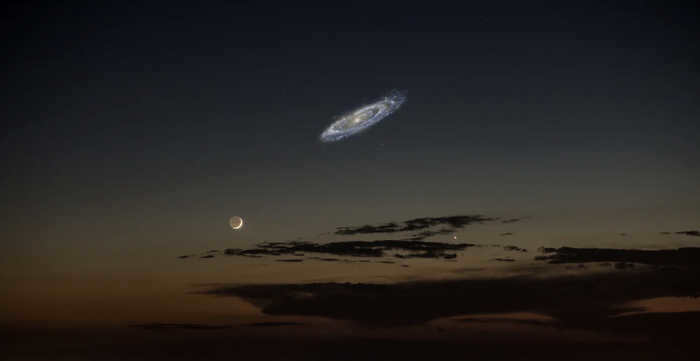
In approximately 4 billion years, our galaxies are expected to collide, resulting in the formation of a new, larger galaxy.
However, before that happens, humanity will have to overcome much larger challenges. Within that time frame, the increased activity of the Sun will render life on Earth impossible. This leaves us with approximately one billion years to expand into space and explore other star systems, not just in the realm of fiction, but in reality.
If you want to see more articles about space and science in your feed, give it a plus! Additionally, you can check out my Telegram channel, CosmoVision, for more space-related content.
However, Zeus did not abandon his child and mistress to their destiny. By his command and the intervention of the sea nymphs, the chest was carried by the waves and eventually washed ashore on the island of Seriphos. The myth states that with the assistance of the gods, a fisherman named Dictys was able to retrieve the chest.
At this point, the myth diverges slightly.
- Some sources claim that Dictys took in Danae and raised Perseus as his own son. This is partially supported by the fact that the name of a humble fisherman became well-known in history.
- Other sources suggest that Dictys brought Perseus to the local king, Polydectes. The king was captivated by Danae’s beauty but, being married, he respected the laws of hospitality and did not force himself upon her. Instead, he entrusted Perseus to be raised in the temple of Athena.
Perseus matured into a robust, courageous, and attractive young man. None of Polydectes’ disciples or other youngsters could rival Perseus in any contest. He consistently emerged as the victor. As he advanced in age, he transformed into a formidable warrior, to the extent that the monarch himself became intimidated by him.
Also referred to as Messier 31, or M31.

This celestial body acquired its designation from Charles Messier, a renowned French astronomer who included it in his well-known catalogue as M31. Messier documented numerous objects in the Northern Hemisphere, although he did not personally discover all of them.
Schematic Representation and Location of the Object
The cluster consists of a total of 20 stars and is also home to celestial objects such as the Andromeda Nebula, as well as the elliptical-type galaxies Messier 32 and Messier 110. In terms of magnitude, this constellation ranks 19th among the numerous star clusters in the night sky. It is situated within the Perseus family, alongside other similar clusters including:
- Cepheus
- Lizard
- Perseus
- Triangle
- Ascendant
- Cassiopeia
- The Whale
- Pegasus
The Andromeda constellation covers an area of 722 square degrees. It can be located in the first quadrant, specifically in the northern hemisphere (officially designated as NQ1). This celestial object is most visible at latitudes ranging from +90 to -37. It is composed of a chain-like formation of stars that stretches from the northeast to the southwest.
In order to locate the Andromeda Constellation in the night sky, it is necessary to first locate the Great Square of Pegasus. In the northeastern corner of the square, you will find the star Alferanz, which marks the beginning of the Andromeda constellation. From there, a chain of stars extends towards the southwest. If we refer to the main coordinates for locating it, they are α = 1h, δ = +40 °.
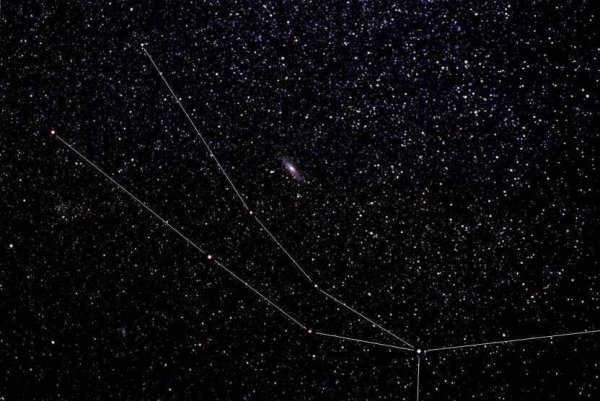
The Configuration of Our Galaxy
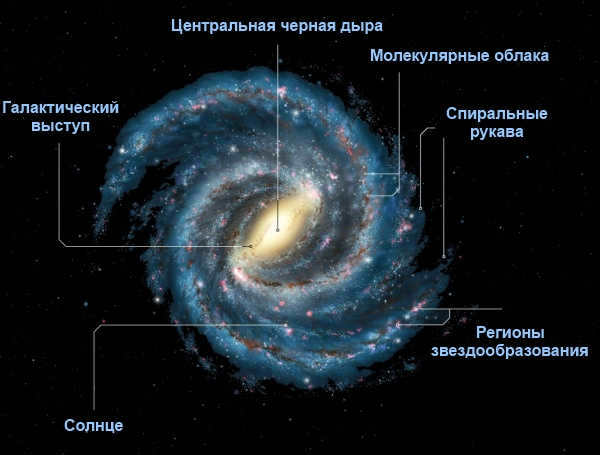
If we examine the structure of the Andromeda Galaxy closely, we can observe the following:
The galaxy itself is composed of the following components:
- The central bulge, which acts as the core of the galaxy;
- Arms, which are regions surrounding the central bulge, including the immediate regions above and below the galactic plane.
- The spiral arms, which extend outward from the core. Our Solar System resides within one of these spiral arms of the Andromeda Galaxy.
- Globular clusters. Several hundred of these clusters are scattered above and below the galactic plane.
- Halo. This vast, faint region encompasses the entire galaxy. The halo consists of high-temperature gas and possibly dark matter.
The rotation speed of the halo disk is noticeably higher in comparison. It resembles two plates that have been folded together at their edges. The diameter of the Galaxy’s disk measures approximately 30 kpc (equivalent to 100,000 light-years), with a thickness of about 1,000 light-years. The rate of rotation varies at different distances from the center, increasing rapidly from zero at the center to 200-240 km/s at a distance of 2,000 light-years. The mass of the disk is equivalent to 150 billion times the mass of the Sun (1.99*1030 kg). The disk is home to a concentration of young stars and star clusters, including numerous bright and hot stars. The gas within the Galaxy’s disk is unevenly distributed, forming massive clouds. Hydrogen is the primary chemical element within our Galaxy, accounting for approximately 1/4 of its composition, alongside helium.
The nucleus of the Galaxy, located in the Sagittarius constellation, is considered to be one of the most fascinating areas in the entire Galaxy. Unfortunately, the visible radiation from this center is completely obscured by layers of absorbing matter, making it difficult to study. However, with the development of infrared and radio receivers, scientists have been able to explore this hidden region to a greater extent. The central regions of the Galaxy are known for their high concentration of stars, with thousands of them present in every cubic parsec. As we move closer to the center, we also find ionized hydrogen and numerous sources of infrared radiation, suggesting that star formation is actively occurring. Additionally, it is suspected that a massive black hole, weighing approximately one million times the mass of our Sun, resides at the very center of the Galaxy.
One of the most remarkable features of spiral galaxies is their spiral arms, which have given rise to their name. These arms are predominantly populated by young stars, scattered star clusters, and dense clouds of interstellar gas where stars continue to form. Unlike the halo, which rarely exhibits any stellar activity, the arms are teeming with life as matter continuously flows between interstellar space and stars. Unfortunately, the spiral arms of the Milky Way are mostly obscured by absorbing matter, but their exploration began with the advent of radio telescopes. These telescopes enabled scientists to study the Galaxy’s structure by observing the radio emission of interstellar hydrogen atoms concentrated along the extensive spiral arms. According to current theories, the spiral arms are formed by compression waves propagating through the galaxy’s disk. As the waves pass through regions of compression, the matter in the disk becomes denser, leading to more intense star formation from the gas. The reasons behind the formation of this distinctive wave structure in the disks of spiral galaxies are still not fully understood, and many astrophysicists are actively researching this phenomenon.
Hubble, galaxies, and the expansion of the Universe
Edwin Hubble deserves much recognition for his groundbreaking work in 1924, which demonstrated that our galaxy is just one among many. Through his observations with the powerful 100-inch telescope, he made the remarkable discovery that a collection of stars, previously believed to be a part of the Milky Way, was actually the Andromeda galaxy, located a staggering 2.2 million light-years away. In 1927, Jan Oort further expanded our understanding by confirming that galaxies undergo rotation around their central axis.
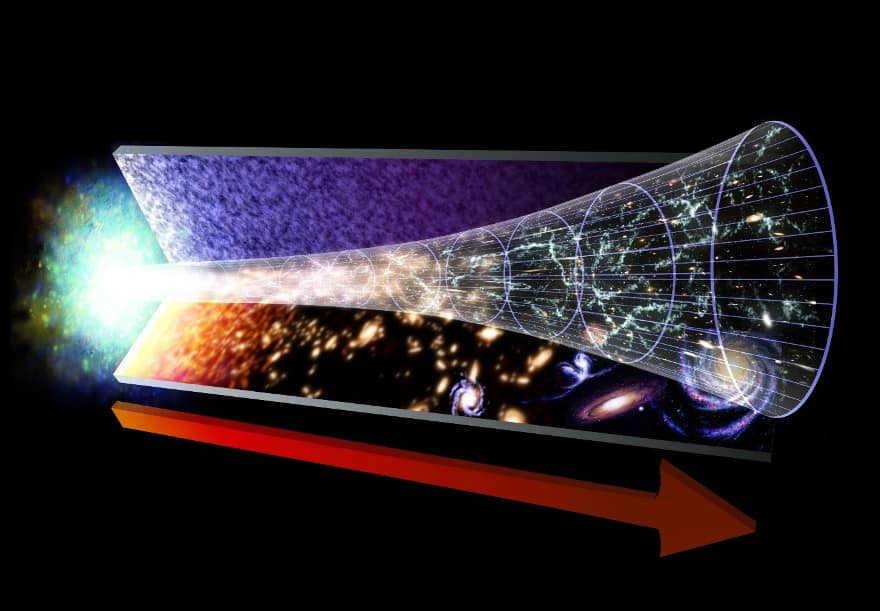
Hubble’s law states that distant galaxies are moving away from us at high speeds, as revealed by the Hubble telescope. This discovery has led to the understanding that the universe is expanding.
Back in 1996, the Hubble telescope captured images of 1,500 distant galaxies in various stages of formation, significantly increasing the estimated number of galaxies in the universe. At that time, it was believed there were only around 50 billion galaxies, but today we know that the actual number is much higher. On our website, you can explore a wide range of galaxies and view high-quality photos, diagrams, and drawings of cosmic structures in the Universe.
- What exactly is a galaxy?
- How many galaxies exist in the Universe?
- Which is the largest galaxy?
- Which galaxy is closest to us?
- Which is the youngest galaxy?
- What is the most distant object ever captured?
- What is the total number of discovered galaxies?
- How many planets are typically found within a single galaxy?
- What is the distance to the Andromeda galaxy?
- Which galaxy is predicted to collide with the Milky Way?
- What is the official name of our galaxy?
- Where is Earth located in relation to other galaxies?
- Why is the Milky Way called by that name?
- How are galaxies named?
- What are some examples of named galaxies?
Exploring superclusters and galaxy clusters.
- What is the Great Attractor?
- What is the Virgo cluster?
- Which cluster of galaxies is referred to as the Virgo Cluster?
- What are some examples of galaxy clusters?
- What are superclusters?
- What is the Local Group of galaxies?
- How do galaxies evolve?
- What causes galaxies to rotate?
- How do large galaxies form?
- What is the center of a galaxy called?
- What is an active galactic nucleus?
- What is the galactic plane?
- What is the galactic equator?
- What is the alignment of the galaxy?
- What is the definition of intergalactic space?
- What are the characteristics of blazars?
- What are the features of spiral galaxies?
- What are the unique properties of jumper spiral galaxies?
- What are the distinguishing characteristics of irregular galaxies?
- What are the defining traits of elliptical galaxies?
- What are the different types of dwarf galaxies?
- What is the concept of dark matter galaxy?
- What are the various shapes that galaxies can have?
- What are the Magellanic clouds?
- What are the key characteristics of the Large Magellanic Cloud?
- What are the defining features of the Small Magellanic Cloud?
- What are some other notable galaxies?
Satellites orbiting the M31 galaxy
The M31 galaxy, also known as the Andromeda Galaxy, is surrounded by a number of smaller dwarf galaxies, which are stellar systems composed of a few billion stars. Among these, the most notable are the compact elliptical galaxies M 32 and M 110, which can be seen in any photograph of the Andromeda Galaxy. According to calculations, M 32 may have had a spiral structure in the recent past, but the formation of its spiral arms was hindered by the strong tidal forces exerted by the Andromeda Galaxy.
M 110 is also influenced by the gravitational interaction with the Andromeda Galaxy. Astronomers have observed a large stream of stars rich in heavy metals at the outer regions of M 31, known as its halo. Similar stars are also found in the dwarf galaxy M 110, suggesting that there is a migration of stars between these two galaxies.
Similar to these and the other two satellites, which were only discovered in 1944, the Andromeda Nebula and our Milky Way are simply enormous. However, this fact should not lead to complacency, as the number of colossal galaxies known to us is estimated to be in the millions.
In our current time (2013), through many years of observations with the Canada-France-Hawaii telescope, a complete group of miniature galaxies orbiting in the same plane around M 31 has been found.
F. J. Siegel, “Treasures of the Starry Sky”
Main celebrities
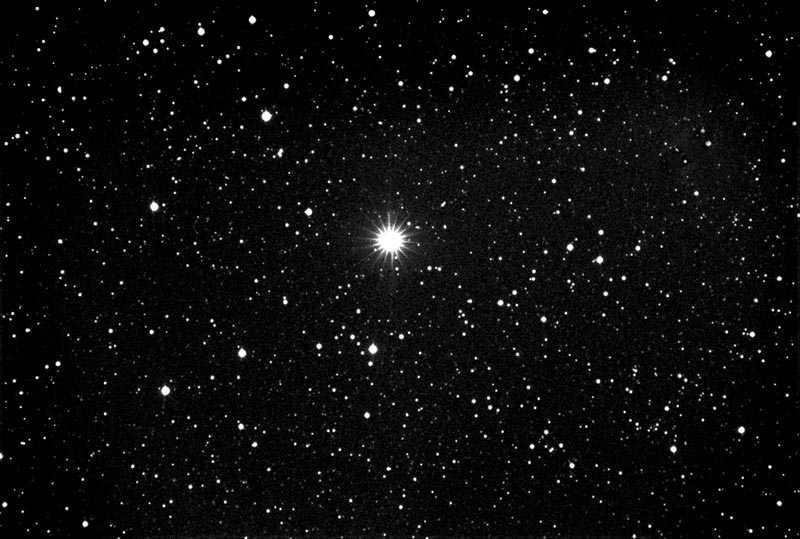
This celestial body is known as Sirrah and is considered the most brilliant star. It is located at a distance of 97 light-years from our planet.
Sirrah is a binary star system and has an apparent magnitude of +2.06. The primary star, which is a B8 subgiant, emits a blue light and is composed of elements such as mercury and manganese. With a mass equivalent to 3.6 times that of the Sun and a temperature of 13800 K, it shines 200 times brighter than our own star, making it the most luminous mercury-manganese star observed.
The secondary star in this system is also more massive than the Sun and outshines it by a factor of 10. These two stars revolve around each other in a period of 96.7 days.
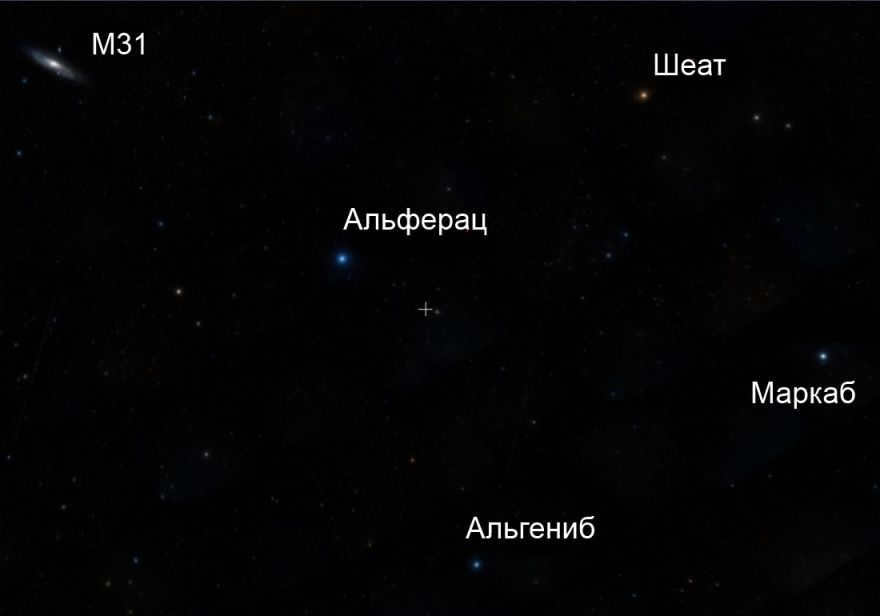
The Andromeda Galaxy, Alpheratz and Pegasus.
Alpheratz was previously considered a part of Pegasus, so it was known by two names, Alpha Andromeda and Delta Pegasus. Alpheratz and Sirrah have their origins in the Arabic phrase “al surrat al-faras” – “the horse’s navel”.
Alpheratz is the northeastern star of Pegasus. There are three other stars that, when combined, form a square. These stars include Markab, Sheath, and Algenib. Alpheratz connects Andromeda to Pegasus, symbolizing the moment when Perseus’ horse rushed to save Andromeda.
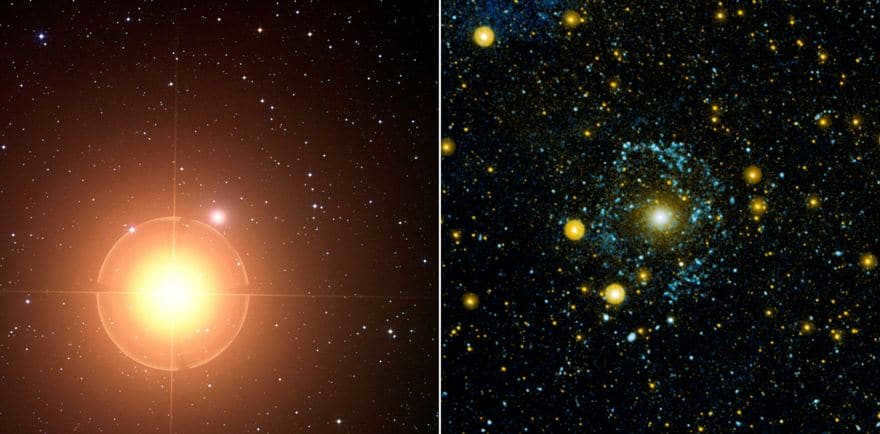
It has a similar apparent magnitude as Alpheraz (ranging from +2.01 to +2.10). This star is suspected to be a semiregular variable star. The star in front of you is a red giant of the M-type, located 200 light years away. It outshines the Sun by a factor of 1900 in brightness and has 3-4 times the mass. It has a companion star that is a hydrogen-burning star with a size of 14. Mirach is part of a group of stars called the belt.
The name itself is derived from the Arabic word for “belt” and is located in the left hip of the Andromeda constellation. It is situated 7 arc minutes away from the NGC 404 galaxy.
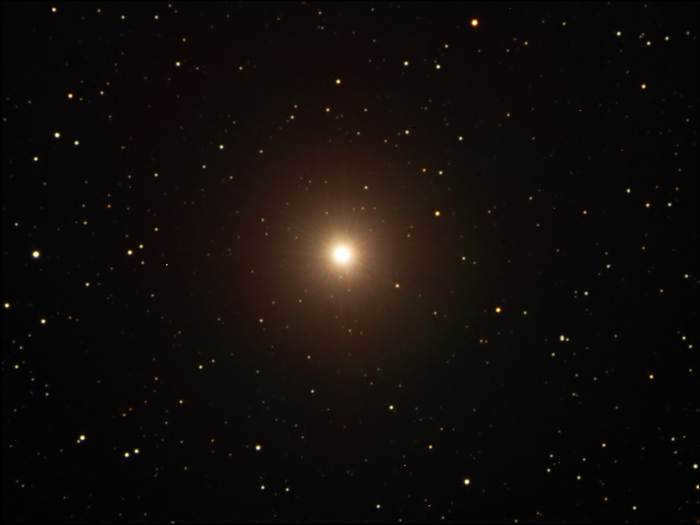
It holds the third position in terms of brightness. Its name originates from the Arabic term “al-‘anaq al-‘ard” which means “desert lynx”. This celestial body is situated at a distance of 350 light-years from our location. It is classified as a binary star system. The primary star, known as Gamma-1, is a majestic golden-yellow giant accompanied by a blue companion. These two stars are separated by an angle equivalent to 10 arc seconds. The primary star is a luminous K-type giant with a magnitude of 2.26 and is positioned at a distance of 355 light-years. It shines 2000 times brighter than our Sun. On the other hand, the secondary star is a binary system consisting of two white dwarfs.
This double star possesses an apparent magnitude of 3.28 and can be found 101 light-years away from our solar system. One of the stars in this system is a brilliant K-type giant, while the other is either a white dwarf or a G-type main sequence star.
It belongs to the category of B-type main-sequence dwarf stars and exhibits a bluish-white hue. With a magnitude of +4.29, this star is located at a distance of 503 light-years from us.
A binary star system is depicted by a dwarf that is yellow-white in color and a red dwarf that is dimmer. It is home to four planets that are the size of Jupiter and orbit around it. This star system is younger than the Sun, being only 3.1 billion years old. Additionally, it is more massive and brighter compared to the Sun. One of the planets, known as planet b, is situated 750 astronomical units away from the star.
Ypsilon, which is part of the Andromeda constellation, is located at a distance of 44 light-years. It holds the 21st position on NASA’s list of the top 100 places to search for Earth-like planets.
This star system is classified as a double star. Its name is derived from the Arabic word “al-dhayl,” which means “train” or “tail.” It is situated 196 light-years away and has a magnitude of +4.875. Its spectral class is G9.
The star is the fifth brightest in the constellation, with a magnitude of 3.57. It is visible at a distance of 177 light years and is classified as an orange K-type giant. Originally assigned to Andromeda by Ptolemy, it was later moved to Perseus by Johan Bayer. However, English astronomer John Flemsteedo returned it to its original constellation.
Another star, a white dwarf of A-type, is located 136 light-years away from Earth. It has a magnitude of +3.86.
There is also a double star consisting of two red dwarfs. It is one of the closest double stars to the Sun, with a distance of 11.7 light-years. It is designated as Groombridge 34 A and Groombridge 34 B.
Another double star, located 660 light-years away, has one component with a magnitude of 4.3 and a fainter companion with a magnitude of 9.
Lastly, there is a variable star of the Z Giraffe type. Its brightness ranges from 10.3 to 14 over a period of 14 days.
– a binary star system with two components of six elements each.
There are numerous black holes present in it
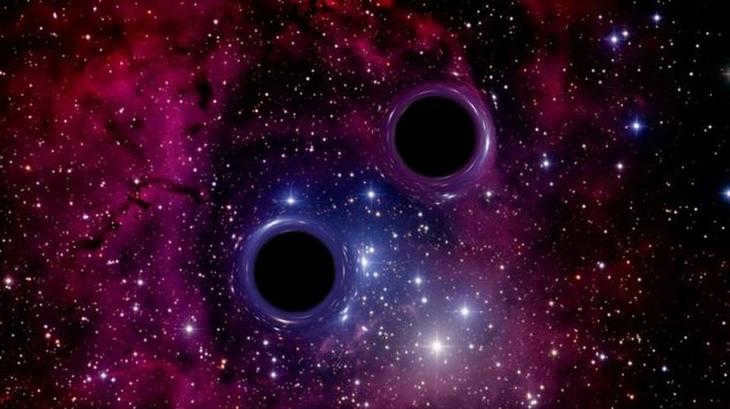
In the past, the Andromeda galaxy was home to a total of 9 known black holes. However, in 2013, the number of black holes in the galaxy increased significantly, reaching a total of 35. After careful observation, astronomers have recently discovered 26 additional black hole candidates, further adding to the galaxy’s already dense population of these celestial objects. Interestingly, most of these newly discovered black holes have masses that range from 5 to 10 times that of our Sun. These seven black holes can be found approximately 1,000 light-years away from the galactic center.
Experts in the field of astronomy have a strong belief that in the coming years, they will have the ability to identify additional celestial bodies of this nature within our galaxy. To illustrate, in the year 2017, two additional black holes were observed and recorded. Furthermore, it was duly noted that both of these entities are positioned in an extremely perilous proximity to one another. The distance separating them is an astonishingly minuscule 0.01 light-years, which can be roughly equated to several hundred times the distance from the Earth to the Sun. Learned individuals in this field have approximated that these particular black holes may potentially collide with each other within a time frame of less than 350 years, ultimately merging into a solitary supermassive black hole.
Boasts a trillion stars
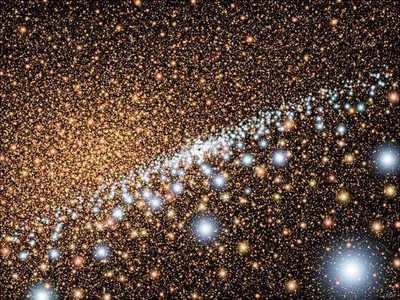
Approximately, the number of stars in the Milky Way is estimated to be between 100 and 400 billion. However, this figure pales in comparison to the staggering amount of stars in the Andromeda Galaxy, which is believed to be around one trillion. Thanks to the remarkable capabilities of the Hubble Space Telescope, scientists have made a remarkable discovery – a rare and extensive population of vibrant and luminous stars within this vast galaxy.
Typically, young and energetic stars emit a blue hue. Surprisingly, the blue stars found in the Andromeda Galaxy appear more mature, resembling aging stars that have undergone an intense heating process, exposing their scorching blue cores. These stars are dispersed throughout the central region of the galaxy and radiate the brightest in the ultraviolet spectrum.
Fascinating Information, Precise Position, and Interactive Map
The Andromeda constellation is a captivating star cluster that holds the 19th position in terms of size among the celestial formations visible in the night sky. Covering a vast expanse of 722 square degrees, it resides in the first quadrant of the northern hemisphere (NQ1). This mesmerizing constellation can be observed from latitudes ranging from +90° to -40°, offering a breathtaking celestial spectacle. Andromeda shares its cosmic neighborhood with the enchanting constellations of Cassiopeia, Lizard, Pegasus, Perseus, Pisces, and Triangle. As part of the illustrious Perseus family, it is closely related to Ascendant, Cassiopeia, Cepheus, Cytus, Lizard, Pegasus, Perseus, and Triangle.
- Alpheratz (α And) – 2.06m
- Mirach (β And) – 2.06m
- Alamac (γ And) – 2.18m
- Perseus
- Cassiopeia
- Lizard
- Pegasus
- Pisces
- Triangle
Within the Andromeda constellation, there exist three celestial bodies with a magnitude brighter than 3. Among these stars, three of them are situated at a distance of 10 parsecs (equivalent to 32.6 light-years) from us. The most luminous star within this grouping is known as Alpheratz, while the nearest star is Ross 248, classified as an M6V spectral class and situated a mere 10.3 light-years away.
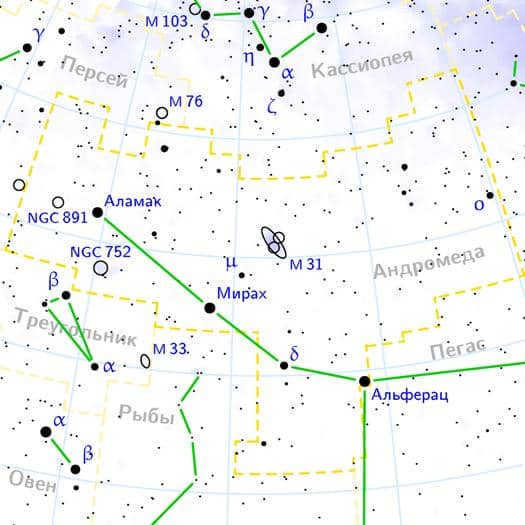
There are a number of stars that possess exoplanets. Andromeda’s Ipsilon (F8V) has four, while the triple star Kappa Andromeda (B9IVn) has one, which is 13 times the size of Jupiter (discovered in 2012). The variable star 14 Andromeda (Veritata) has one extrasolar planet, discovered in 2008.
HD 5608 (K0IV) has a transiting planet, and HD 8673 (F7 V) has a substellar companion discovered in 2005 (possibly a brown dwarf). V428 Andromeda (K5III) has two potentially suspicious planets, discovered in 1996. Other host stars include: HD 222155 (G2V), HD 16175 (F8 IV), HD 1605 (K1IV, two), HD 13931 (G0), HD 5583 (K0), HD 15082 (kA5 hA8 mF4), HAT-P-6 (F), HAT-P-16 (F8), HAT-P-32 (F/G), WASP-1 (F7V), Kepler-63, HAT-P-19 (K), HAT-P-28 (G3), and HAT-P-53.
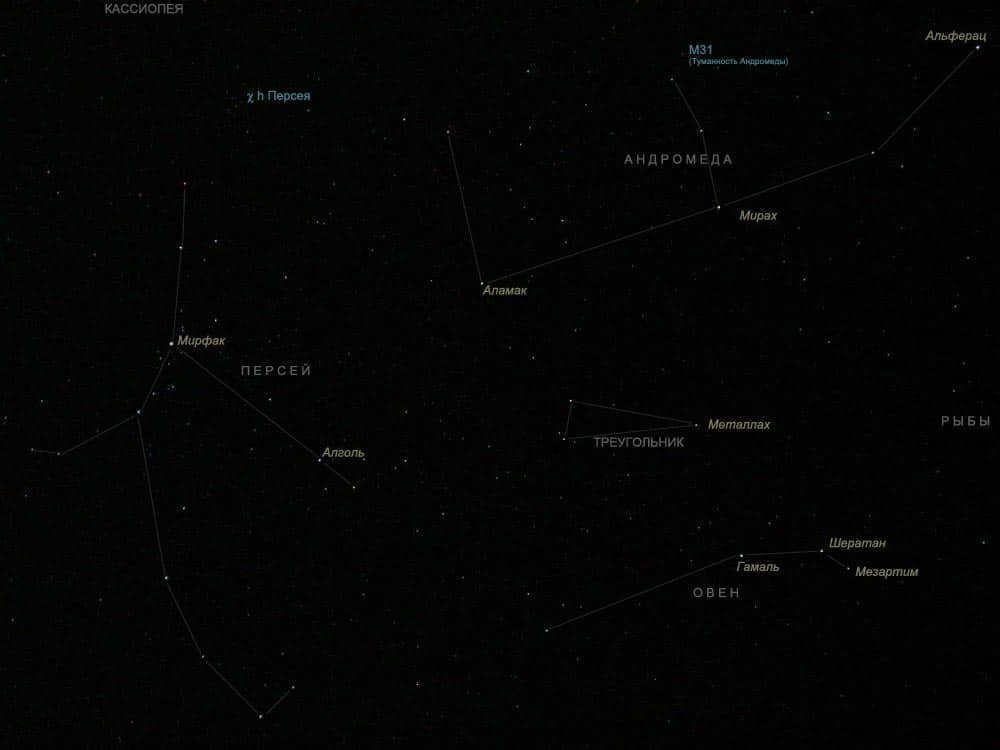
Andromeda Constellation Map
Andromeda is also home to three Messier objects: the Andromeda Galaxy (M31), Messier 32, and Messier 110.
This constellation is connected with the Andromedids (Bielids), a meteor shower. It was initially observed in Russia on December 6, 1741. Although its brightness has diminished since its initial discovery, it can still be seen in mid-November. The primary component is the 3D/Biela comet, which was documented in 1772.
Final Thoughts
Here marks the conclusion of our delightful journey amidst the twinkling heavens. As we make our way back to Earth, I trust that you have enjoyed this experience and have gained a deeper understanding of the celestial bodies above. Now, you possess the knowledge to identify and locate the constellations of the northern hemisphere in the night sky, uncovering the intricate patterns that captivated our ancestors. You can share these fascinating tales and legends with others, and perhaps even discover more intriguing stories to tell. Learning new things is truly a remarkable pursuit, and it brings immense joy to impart this newfound knowledge to others. Additionally, capturing the beauty of the stars through photography, even with just your smartphone, can be a delightful endeavor. For more tips on this subject, be sure to check out our article on How to Capture Stellar Moments with Your Smartphone.
And… remember to gaze up at the sky more frequently! Not only at night, but also during the day (while being mindful of safety, of course). It is such a simple, yet enchanting practice that helps to transition from a state of haste and living in a chaotic world, to being present and finding a sense of equilibrium. Ultimately, in order to achieve this, you must establish a connection with your higher self, and that requires at least slowing down and disconnecting from the mundane. The captivating night sky aids immensely in this endeavor.
We invite you to join us at our research station, Homie-Art! May harmony be with you both internally and externally! Additionally, try projecting your desired experiences on an emotional level! When you tilt your head upwards, it is entirely possible that your thoughts are being heard and your feelings are being interpreted as the experiences you wish to have. Embrace what you feel.
P.S. During the journey and the writing of this article, The Secret Space Navigator – Cool Assistant, also known as the StarWalk2 mobile app, was utilized. I highly recommend giving it a try!

Unique Article Title
Discovering the Marvels of the Night Sky in the Northern Hemisphere
Unique Description
Embark on a mesmerizing journey through the night sky in the Northern Hemisphere and uncover the secrets of 15 dazzling constellations
The primary celestial bodies in the Andromeda constellation
Within the Andromeda constellation, the stars are positioned in a distinctive arrangement, forming a characteristic pattern. In total, there are 19 stars, each with unique parameters.
- Alferanz, Mirach, Alamac, and Adhil are regarded as the main stars in this constellation. Notably, the first three are the most luminous bodies within the entire Andromeda constellation (And for short). Ypsilon and Kappa are known to possess their own exoplanets.
- Alferanz, also known as Sirrah, is situated 97 light-years away. It surpasses even the Sun in terms of brightness. Its composition is dominated by mercury-manganese compounds. Alferanz is denoted as Alpha Andromeda.
- The constellation Almack is known for its brightness, ranking third in the gamut. Its name, derived from Arabic, means “Desert Lynx”. It shines nearly 2000 times brighter than the Sun.
Interesting facts
Many geographers in the past wondered where the rock to which Andromeda was chained could be found. According to Strabo, the rock was located in Jope, not far from the city of Tel Aviv. Josephus Flavius, a Jewish chronicler from the 1st century AD, even claimed that remnants of Andromeda’s chains and the monster could be seen on the shore!
Speaking of Ethiopia, it is situated quite a distance from Israel. Evidently, this boulder was located on the coastline of the Red Sea, and Andromeda herself was of African descent. However, according to Herodotus, all the mentioned events occurred within the boundaries of India. Without a doubt, the question remains unanswered. It is entirely plausible that the tale recounted actual occurrences, but evolved into a myth that has endured throughout history.
The motion of the galaxy and its companions
Everything in the universe is interconnected and in constant motion – this is not a mere philosophical statement, but an obvious conclusion drawn from the well-known principles of gravity. The Andromeda Galaxy is no exception to this rule. Different regions of the galaxy exhibit various velocities of movement. In the vicinity of the galactic core, stars and gas rotate at a remarkable speed of 225 km/sec, while at a distance of 7,000 light years, this speed decreases to 50 km/sec. These objects experience acceleration due to the concentration of mass in the core, which is comprised of massive stars and a supermassive black hole, the traditional center of the galaxy.
Behold the very first image of the Andromeda galaxy. In the upper part, you can see the satellite M110, while M32 is located to the right.
In addition to the Andromeda galaxy, there are also 14 dwarf satellite galaxies known as “star islands” that are associated with it. Among these, M32 and M110 are the largest and can be easily observed with a telescope, leading to their discovery in the 18th century. It is believed by scientists that M32 may have caused a disruption in Andromeda’s disk. Furthermore, Andromeda regularly absorbs these dwarf galaxies, with some globular clusters of stars in the halo of the “star island” being remnants of the absorbed galaxy’s nuclei.
Andromeda, the largest member of the Local Group of galaxies, has various interactions with other galaxies. Whether these interactions are beneficial or detrimental, Andromeda’s trajectory intersects with that of our Milky Way. In approximately 3-4 billion years, these two galaxies will merge. While it is challenging to predict the precise movement of such immense celestial bodies, recent studies indicate that a collision between Andromeda and the Milky Way is unavoidable.
How will this collision occur? As the galaxies gradually move closer, their central nuclei will begin to orbit each other at an incredibly fast pace. During this celestial “dance,” the gravitational forces will scatter the stellar disks, causing them to disperse like splashes of water. The nuclei will continue to spin at an accelerated rate until they merge, forming a new, massive bulge. The resulting galaxy will be lenticular in shape, as not all the stars will return to their original positions following the tumultuous merger of the Milky Way and Andromeda, and the spiral arms will be obliterated.
What does the future hold for our Sun and Earth? Rest assured, they are unlikely to be harmed – the possibility of a collision between the stars of our galaxy and another is quite slim. To illustrate this point, imagine if the Sun were reduced to the size of a table tennis ball, the Milky Way would have a diameter of 30 million kilometers. Even if we were to bring together the stars from both galaxies, the distance between each ball would still be over 3 kilometers. So, is there really a high chance that these “balls” would collide? It’s highly unlikely, as real stars, much like the cores of galaxies, would repel each other upon initial contact rather than directly collide.
As a result, it is highly likely that our Sun will embark on an intergalactic journey – when the merger occurs, it will separate from the Milky Way and venture into the vastness of the Universe. The planetary bodies, on the other hand, will remain unaffected and their orbits will remain unchanged. Nevertheless, during this period, the Earth will face its gravest threat from the Sun itself, as it approaches the red giant phase – the prelude to its eventual demise.
The Andromeda Nebula, despite its appearance as a hazy spot, is actually an enormous spiral galaxy and is a beloved celestial object among astronomy enthusiasts. It is the most prominent galaxy visible in Russia and nearby countries, and in ideal conditions, it can even be observed with the unaided eye. Situated at a distance of 2.5 million light-years from our location, the Andromeda Galaxy holds the distinction of being the farthest object in the Universe that can be seen without the assistance of a telescope or other optical instrument. Let’s explore the method of observing the Andromeda Nebula using only our naked eyes.
There is a reason why I mentioned earlier that the Andromeda galaxy can only be observed with the naked eye under specific conditions. Many beginner astronomers, once they grasp the concept of stellar magnitudes and discover that the Andromeda Nebula has an apparent stellar magnitude of 3.44m, assume that it should be easy to see. Their logic goes something like this: the star Megretz, which has a similar brightness and is located near the handle of the Big Dipper, is clearly visible even in city skies – so why wouldn’t they be able to see the Andromeda Nebula in the same sky?
What they fail to remember is that the integral stellar magnitude of the galaxy, which is the light that the Andromeda Nebula would emit if it were condensed into a star-shaped, point-like entity, is 3.44m. However, it is important to note that the integral luminosity is spread out over an area that is several times larger than the visible disk of the Moon in the sky. Therefore, in reality, a small portion of the galaxy would appear much fainter.
What is the Andromeda galaxy
The Andromeda galaxy, also known as the Andromeda Nebula, is a vast cosmic cloud consisting of a trillion stars. In fact, it is 2.6 times larger than our own galaxy, the Milky Way. To put its immense size into perspective, it would take a beam of light approximately 260,000 years to traverse its expanse.
The reason we are able to observe the Andromeda galaxy is due to its size and relatively close proximity to us compared to other galaxies. However, it is important to note that “closeness” is a relative concept in the vastness of space. Despite being the closest galaxy to our own, it still takes a staggering 2.5 million years for light to travel from the Andromeda galaxy to reach us. This means that when we gaze upon the Andromeda galaxy, we are actually seeing the light emitted by a trillion stars that departed from their celestial home 2.5 million years ago, at a time when our ancient human ancestors were just beginning to stand upright on two legs.
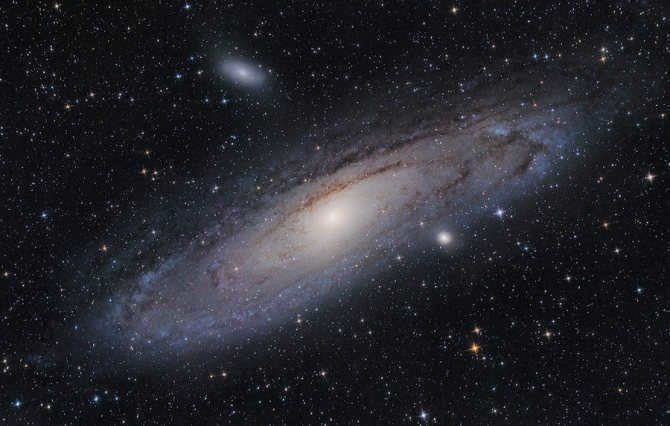
M31, also known as the Andromeda galaxy, is a stunning spiral galaxy that resembles our very own Milky Way. However, due to its orientation towards us at an angle of approximately 15 degrees, we are unable to admire its beautiful spirals in all their glory. Instead, we are treated to the sight of an elongated ellipse rather than a traditional disk.
Interestingly, the Andromeda galaxy dominates a vast portion of the night sky, occupying an area that is a staggering seven times larger than the visible disk of the Moon. Despite this, our limited perspective only allows us to observe its brightest central region and the faint glimmers of its spirals. Should you happen to peer through a pair of 10x binoculars, you will witness the sheer grandeur of this celestial entity, as it engulfs almost the entire field of view. Moreover, with the aid of your peripheral vision, you may catch a glimpse of its expansive edges, which extend far beyond what meets the eye.
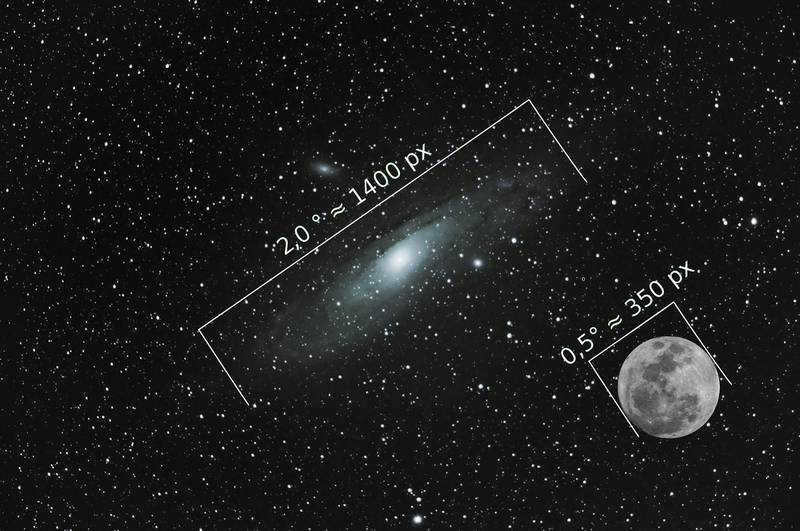
The portion of the sky occupied by the Andromeda galaxy and the Moon is quite fascinating. Interestingly, the galaxy surpasses the Moon in size!
It’s worth noting that the Andromeda Galaxy is currently moving towards us, gradually reducing the distance between us by an astonishing 300 kilometers per second. In approximately 5 billion years, it is predicted that the Andromeda Galaxy will intersect with our own Milky Way. This event will mark the onset of a galactic cataclysm, as these two colossal galaxies come close to colliding. The repercussions will be immense, with hundreds of billions of stars colliding and their trajectories being disrupted. It is even possible that some planetary systems will disintegrate, while new ones will emerge in other regions. Additionally, certain stars may be scattered, potentially extending beyond the boundaries of the galaxy, while fresh multiple star systems may also materialize.
There will be a radical transformation in our galaxy in the future. The combination of the Milky Way and the Andromeda Galaxy will result in the emergence of a colossal new galaxy. Over the course of billions of years, this new galaxy will undergo a metamorphosis and assimilate other nearby galaxies. However, there is no need for concern about this distant future scenario. In approximately 5 billion years, the Sun will expand into a massive red star, causing the Earth to become a desolate, parched planet. If humanity still exists as a species at that time, it will be imperative for us to seek out new habitable environments on different stars in order to survive.


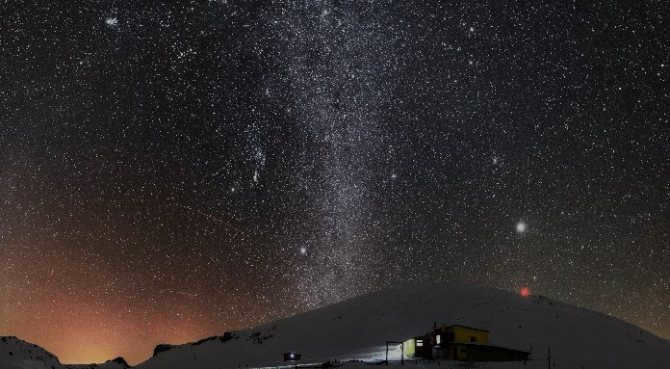
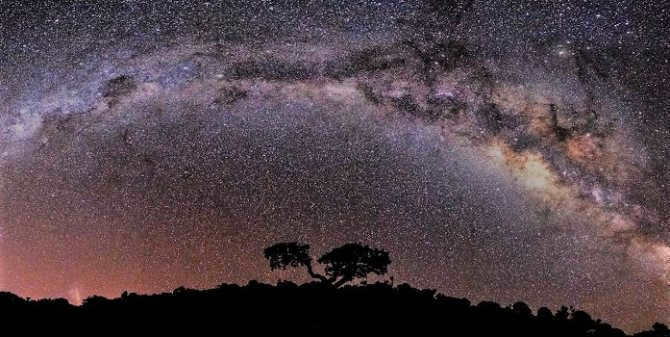
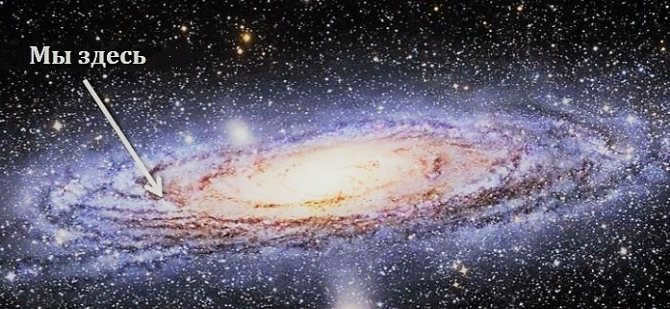
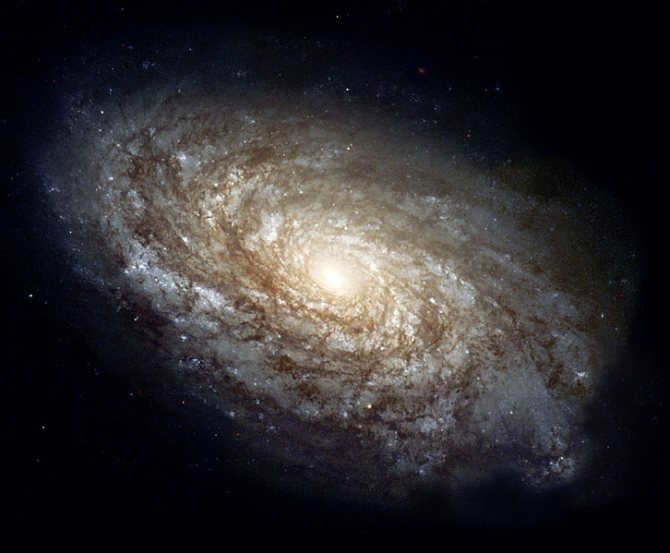
Firstly, let’s discuss the primary factors that impact the visibility of faint celestial objects. Here are the key aspects:
In urban areas, the Andromeda galaxy is challenging to observe even with binoculars. Source: Cloudy Nights
- Sky glow caused by light pollution. Light pollution is a familiar term for city residents. It refers to the phenomenon where the night sky is dominated by artificial light, making only the brightest stars visible. Other celestial objects are overshadowed by the glare produced by streetlights, neon signs, shop windows, and car headlights. Due to extensive urban lighting, the Milky Way has vanished from the city sky.
- Clouds. I am not talking about the typical cumulus or stratified clouds that can ruin any astronomer’s night, but rather about ethereal, fluffy clouds that float at high altitudes and are often completely invisible at night unless illuminated by the Moon. While these cirrus clouds can sometimes enhance the viewing of bright planets, they are a formidable adversary when it comes to observing nebulae.
- Moon. Starting from the first quarter phase and even earlier, the brightness of the Moon poses a challenge for observing faint nebular objects in the sky. When the Moon is near full, attempting such observations becomes futile.
This applies directly to observing the Andromeda Nebula. In urban areas, it is nearly impossible to spot this galaxy without the aid of binoculars or a telescope. I was able to catch a glimpse of M31 on the outskirts of a city with a population of half a million: on exceptionally clear nights, it was visible with the naked eye, and on regular nights, it could be seen peripherally. However, such observations still necessitate expertise.
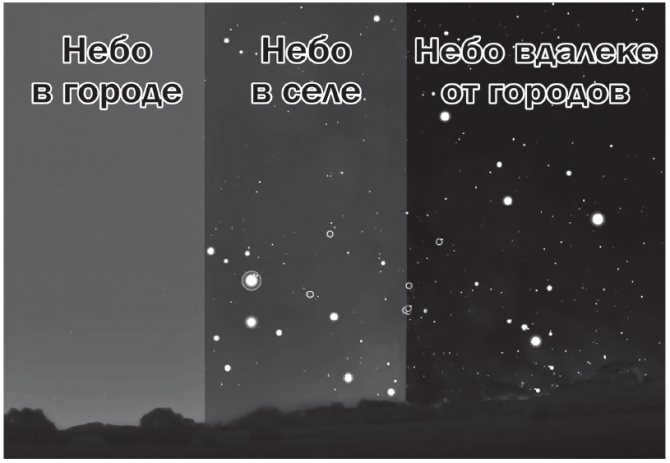
Urban residents have already forgotten the experience of witnessing a truly dark and unobstructed sky. Source: 7ya.ru
Furthermore, it is worth noting the significance of the galaxy’s elevation above the horizon. As we are aware, the Earth’s atmosphere has the ability to absorb light – think about the contrast between the midday Sun, when it is overhead, and the sunset. They appear as distinct celestial bodies! When the object is directly above, the atmosphere’s light absorption is minimal, whereas near the horizon it is maximized. (This can be explained by the fact that the light of the celestial body at the horizon passes through a greater thickness of the atmosphere).
The conclusion derived from the aforementioned information is straightforward: if you wish to observe the Andromeda Nebula with your unaided eyes, make an effort to follow these instructions.
- Locate a location far from streetlights where the sky is genuinely dark, not illuminated, and stars up to 5m in brightness can be seen
- Avoid observing when the moon is present in the sky.
- Search for the galaxy when it is positioned as high above the horizon as possible.
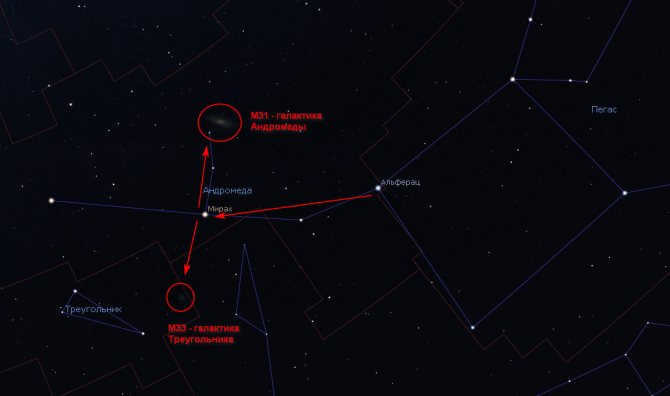
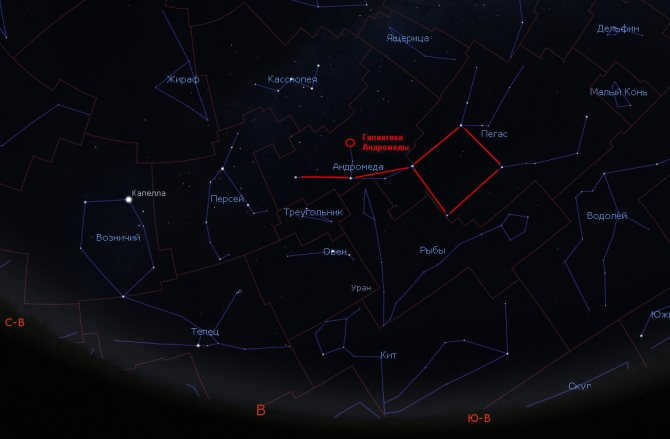
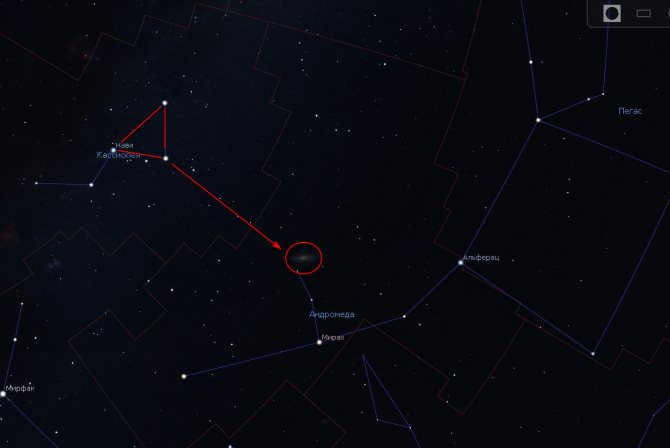
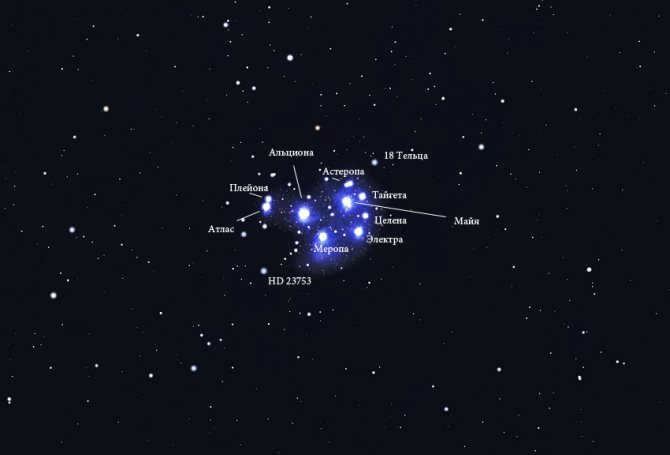
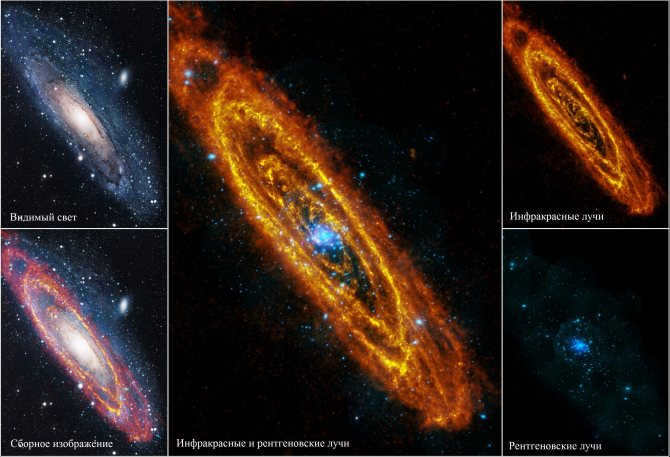
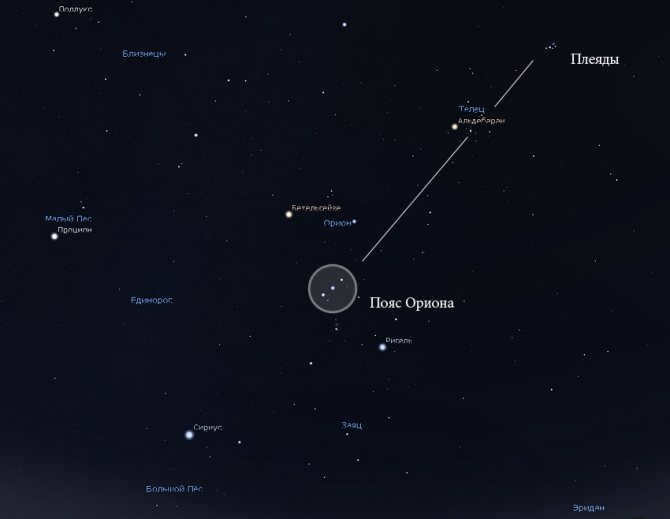
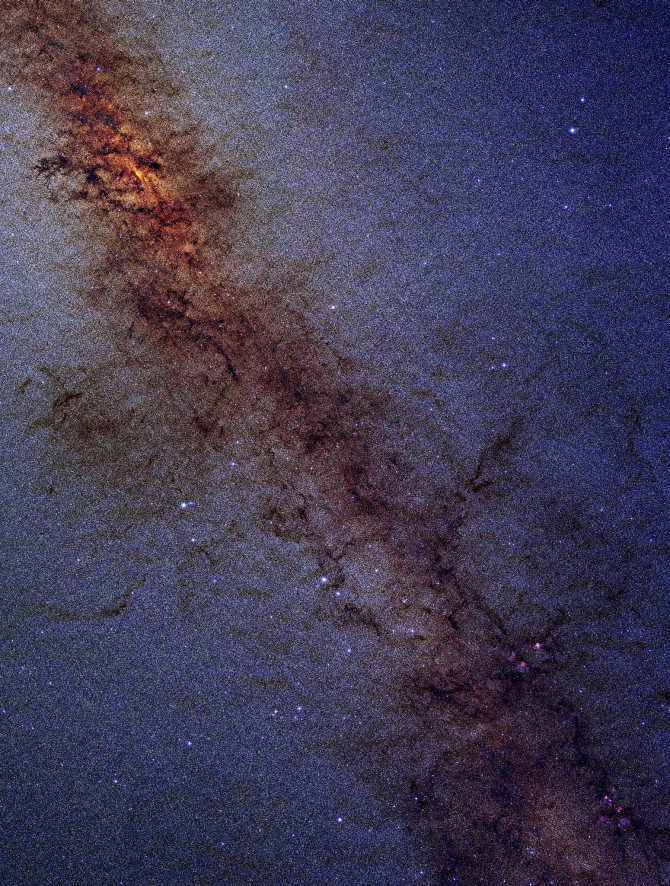
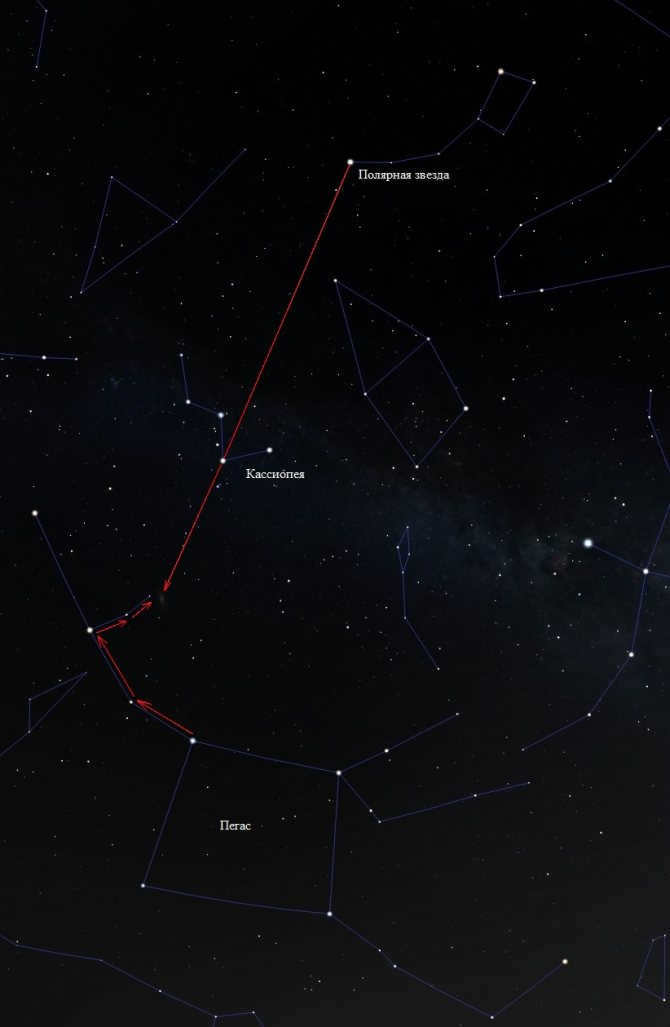
Observational History
The mention of this galaxy can be traced back to 946 AD when it became visible to the naked eye. However, it wasn’t until the development of modern multi-meter telescopes that individual stars within the galaxy could be distinguished. Prior to this, the true nature of the object remained hidden, appearing as a small nebula within our own galaxy. It wasn’t until 1912, through spectral analysis, that the first indications of its extragalactic origin were discovered. It was found that the galaxy was moving towards us at a speed of 300 km/s. Additionally, a supernova explosion in 1917 provided an approximate distance estimation of 500 thousand light years. It was Edwin Hubble who ultimately settled the debates among scientists regarding the true nature of the galaxy.

An image of the Andromeda galaxy captured by the Hubble telescope
Present-day telescopes possess the capability to identify individual stars within the Andromeda galaxy. In early 2020, a photograph was released that depicted 61 thousand light-years of Andromeda, revealing over 100 million stars. To create this mosaic, the Hubble telescope had to capture 7398 separate images, which were then compiled together.
Optimal Time for Observing the Andromeda Nebula
So, when is the ideal time to witness the majestic Andromeda Nebula? The best time for observation is during the night, specifically after midnight, in the months of August and September. As for October, late evening and night are the preferred times. In November and December, evening is the recommended time, while in January, early evening is the most suitable. During these specific periods, the galaxy can be found high above the southern part of the sky, positioned at 75° above the horizon for Moscow and 85° for Sochi.
Assuming you have already met the basic requirements (which shouldn’t be too challenging – it’s probably even trickier for those reading this text!), what should you do next? It’s time to search for the galaxy in the vast sky!
Here is a detailed guide on how to locate the Andromeda Nebula. Essentially, there are two methods to find it. The first method involves starting from the stars of the Pegasus square, while the second method involves starting from the stars of the constellation Cassiopeia, which is positioned above the galaxy. Regardless of the method chosen, you will eventually reach the three stars of the Andromeda belt, which are aligned one above the other. At the base of the belt, you will find the bright (2m) star Mirach, also known as Andromeda’s beta. Positioned above Mirach are two stars with a magnitude of 4, known as Andromeda’s mu and nu. The Andromeda galaxy itself is located directly on the extension of the belt, slightly above and to the right of the nu star.
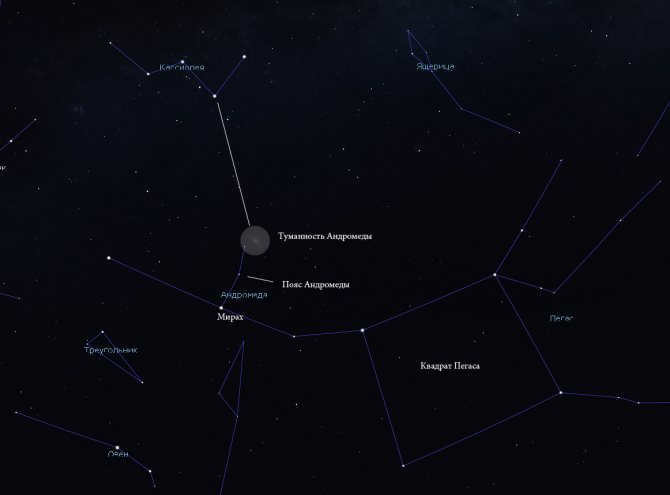
The position of the Andromeda Galaxy is situated between the star Mirach and the constellation Cassiopeia. Please refer to the image provided: Stellarium.
The Configuration of Our Galaxy
What is the shape of the Milky Way?
It is important to remember that our galaxy is classified as a spiral galaxy. It is evident that the Milky Way takes the form of a disk. Furthermore, its structure consists of a central core, galactic arcs, and spiral arms.
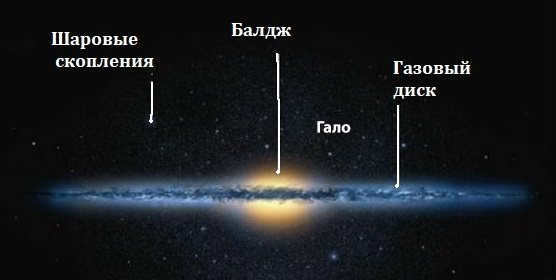
The composition of the galaxy
Due to the high concentration of dust in the Milky Way Galaxy, the visibility of star emissions is limited. As a result, our ability to observe and study all the objects within our galaxy is hindered.
Indeed, astronomers have resolved this issue by developing specialized radio telescopes. It is important to note that the utilization of radio waves has partly enabled the penetration of the dust barrier. Consequently, researchers have defined the specific spiral arms. Undoubtedly, this novel technique has broadened the horizons of outer space exploration. Nevertheless, the composition and characteristics of the Milky Way continue to be a subject of active investigation. In summary, it is evident that the Milky Way takes on the form of a disk, housing a vast multitude of stars, gas, and dust.
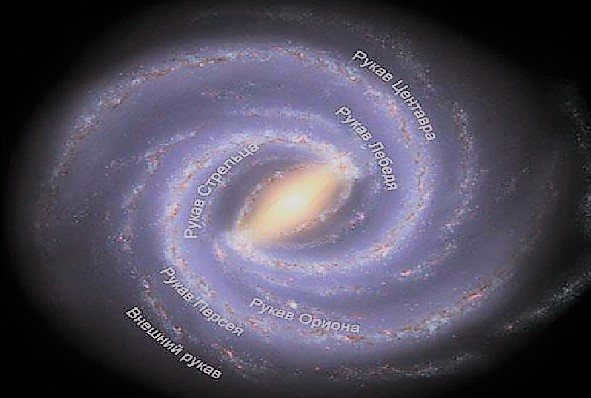
The arms of the Milky Way
The vast expanse of stars
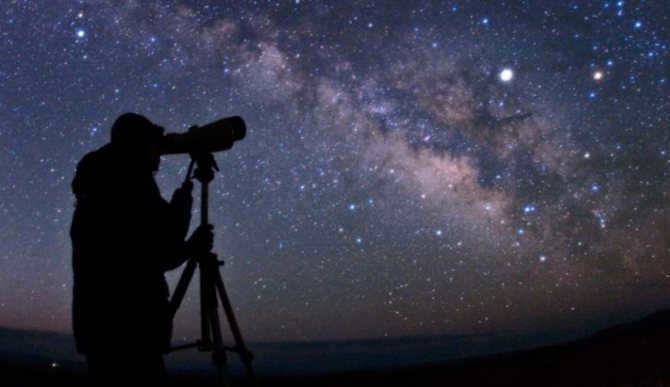
When you’re out at sea, you have the opportunity to see around 1,500 stars. However, if you really want to observe a staggering 6,000 stars, you’ll need to venture out into the vast expanse of the high desert.
Space is not entirely devoid of sound
Normally, we rely on the vibrations of air to perceive sound with our ears. In the airless environment of space, we cannot actually hear any audible sounds.
But that doesn’t mean that sound doesn’t exist in space. In fact, even in a rarified gas or vacuum, there can be long wavelength sound waves that are beyond our hearing range. These sound waves can be generated by collisions of gas-dust clouds or the explosions of supernovae.
Naturally, we cannot directly hear these electromagnetic waves. However, certain spacecraft have instruments that can capture radio emissions, which scientists can then convert into sound waves. For instance, the Cassini spacecraft captured and translated the “voice” of the colossal planet Jupiter in 2001, allowing us to listen to its unique sound.
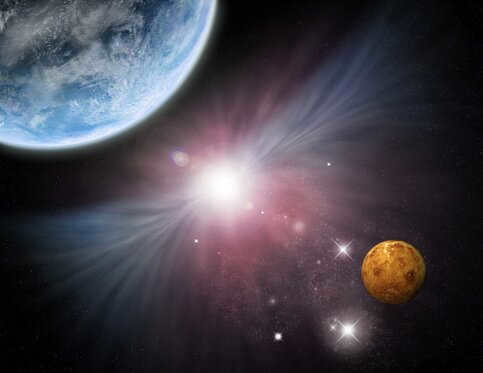
Photo: YAY/TASS
The majority of the planets in our solar system are visible without the need for a telescope
When the conditions are right, we are able to observe Mercury, Venus, Mars, Jupiter, and Saturn from Earth. These planets have been known since ancient times.
Uranus, which is located at a greater distance, can sometimes be seen with the naked eye from Earth. However, before its discovery, it was simply considered a faint star. The existence of Uranus, Neptune, and Pluto, due to their significant distance, was only confirmed by scientists using telescopes. The only planets that cannot be seen with the naked eye from Earth are Neptune and Pluto, the latter of which is no longer classified as a planet.
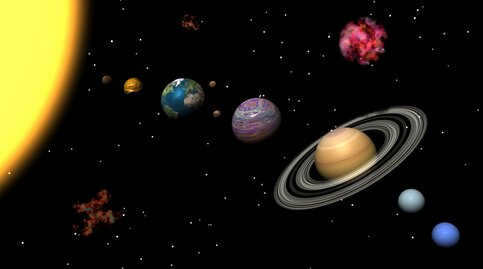
Photo: YAY/TASS
Space is not devoid of color
Although the night sky appears black and the daytime sky appears blue, this is due to the Earth’s atmosphere. It may seem straightforward: space is black because it lacks light. However, what about the stars? In reality, there are countless stars in the cosmos, which should fill it with their radiance.
From our vantage point on Earth, we cannot see stars in every direction because the light from many of them simply cannot reach us. Additionally, our solar system resides in a relatively unremarkable, dimly lit region of the galaxy. The stars in this area are widely dispersed. The nearest star to our planet, Proxima Centauri, is located 4.22 light years away. That’s 270,000 times farther than the distance between the Earth and the Sun.
When we look at the entirety of the electromagnetic spectrum, the cosmos emits a vibrant display of radio waves from a multitude of celestial objects. If only our vision could perceive these waves, we would inhabit a significantly more luminous Universe. However, our current reality seems to be one of complete obscurity.
It is worth noting that the Sun accounts for a staggering 99.86 percent of the mass within our solar system.
Even in the largest urban areas, it’s often difficult to spot the brightest stars in the night sky. This is particularly true in the central parts of cities, where the presence of gas and light pollution from numerous streetlights, neon signs, and floodlights obscures the view. Because of this, most astronomical observatories are situated outside of city limits.
The excessive light pollution “pollutes” the sky, making it too bright and lacking contrast for proper visual studies. Even with a high-powered telescope, the visibility is severely compromised. Amateur astronomers rely on illumination maps to find optimal locations for observing the night sky.
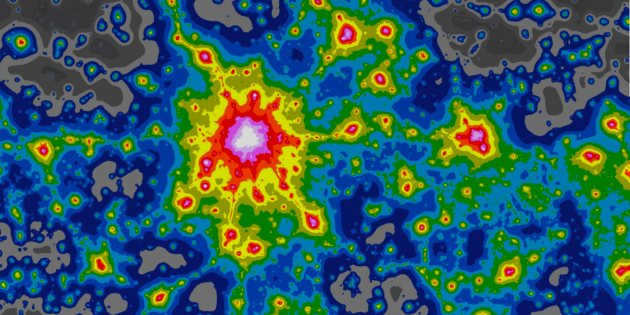

Light pollution map. Moscow is at the epicenter
Those residing far from the epicenter or in smaller settlements have a slightly better chance.
For city dwellers, the accessible celestial objects include the Sun, the Moon, planets, and a few prominent stars. Conducting astronomical observations directly from one’s balcony is possible if the view is unobstructed by buildings and trees, and there are no bright advertisements nearby. However, studying the night sky through a telescope can be hindered by the presence of nearby bodies of water: warm water vapor rises, causing turbulent swirling currents that make observed objects appear to “shake” and diminish the clarity of the image.
If you’re looking for the perfect spot to indulge in some astronomy sessions, head out to the countryside – the further you go, the better. To catch a glimpse of the Milky Way and other galaxies and nebulae through a telescope, you’ll need to venture at least 100 km away from a bustling city. Astronomers regard the mountains as the ultimate destination for stargazing.
What can the naked eye see?
As previously mentioned, since Hipparchus, humanity has made numerous advancements in sky observation technology, including standard binoculars. These binoculars can allow one to see up to 200,000 stars. Additionally, telescopes, even those of modest power, can double this number. However, even with such devices, observers will not be able to see the multitude of objects in the sky, as they are obscured by the central part of the Milky Way. Furthermore, the human eye can only cast a gaze up to a distance of 45.7 billion light years.
It is a common knowledge that the visible universe is home to trillions of stars. However, it is important to note that not all of these stars are visible to the naked eye. This is due to a concept known as stellar magnitude, which refers to the brightness of a star. Interestingly, dim stars that are located nearby can appear brighter than powerful stars that are far away. The lower the stellar magnitude, the more easily a star can be seen. However, there is a limit to how faint a star can be detected by the human eye. This limit is typically set at stellar magnitude +7, although it can vary depending on factors such as visual acuity and the level of darkness in the sky.
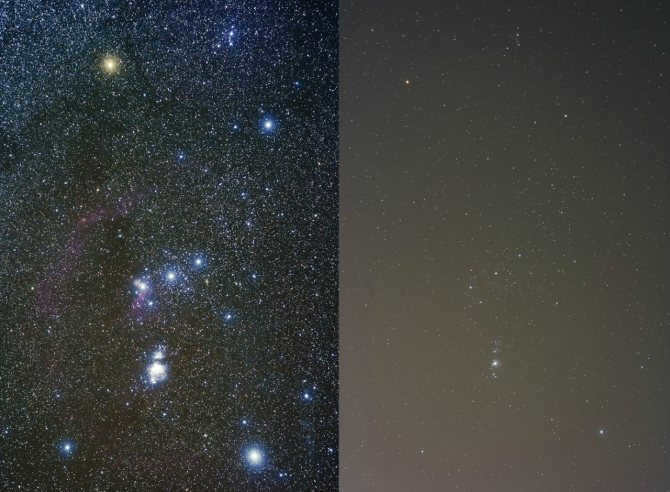
When looking up at the night sky, it is fascinating to think about the vast number of stars that are out there. However, it might surprise you to learn that with the naked eye, we can only see a fraction of them. In fact, the number of stars visible to the human eye is estimated to be around 6000, but this is just an approximation. This number takes into account the fact that the celestial sphere is divided into two hemispheres, and each hemisphere can only see up to 3000 stars. Additionally, some stars are located near the horizon, making them difficult to observe due to the dense atmosphere. Furthermore, the reality is that our view of the horizon is not perfectly flat. It is obstructed by trees, buildings, hills, and other landscape irregularities, which further reduces the number of stars that can be seen simultaneously to around 2500.
- It is worth noting that the presence of these obstacles often results in the construction of large observatories in mountainous regions, far away from populated areas. This is because the atmosphere is less dense there, and the highest mountains offer a more expansive horizon. Particularly sought-after are mountains near the sea or ocean, as the water surface provides the only truly flat horizon in the world.
However, even under ideal observing conditions – namely, a dark, moonless night – the number of visible stars is limited. In the summer, the sky is brighter near the horizon than in the winter, and artificial city lights create a significant amount of light pollution. In a metropolitan area, the number of visible stars can drop to 200-300 at once. Therefore, the optimal viewing conditions for stars can only be achieved in the winter, at least 5 kilometers away from any settlement or illuminated road.
